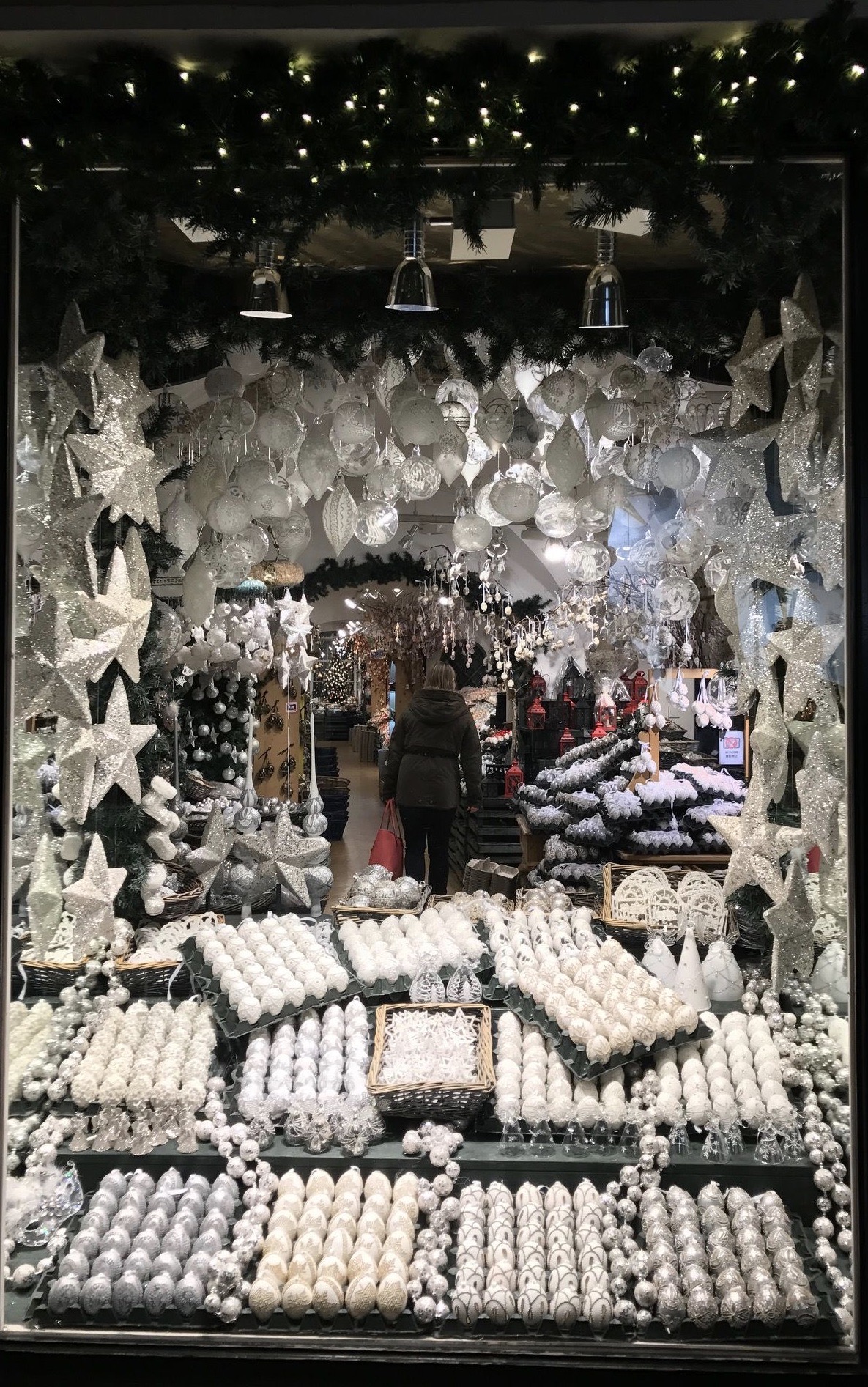MARIANI’S
Virtual
Gourmet
November
28, 2021
NEWSLETTER
IN THIS ISSUE
MATCHING TUSCAN FOOD WITH TUSCAN WINES:
AN INTERVIEW WITH VINTNER GIOVANNI MAZZEI
By John Mariani
NEW YORK CORNER
AMALI
By John Mariani
CAPONE'S GOLD
CHAPTER 35
By John Mariani
NOTES FROM THE WINE CELLAR
HOLIDAY BEST BETS
By John Mariani
❖❖❖
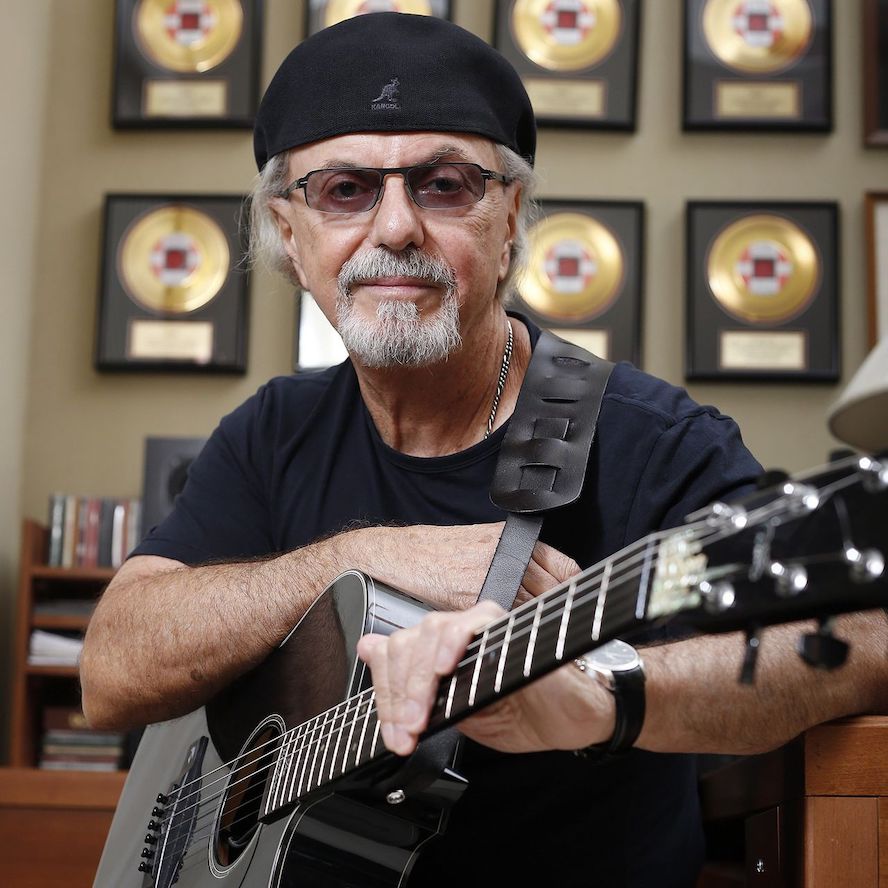 DIIMUCCI
about his doo-wop and new blues album. Go
to: WVOX.com.
The episode will also be archived at: almostgolden.
DIIMUCCI
about his doo-wop and new blues album. Go
to: WVOX.com.
The episode will also be archived at: almostgolden.
❖❖❖
MATCHING TUSCAN FOOD
WITH TUSCAN WINES:
AN INTERVIEW WITH VINTNER
GIOVANNI MAZZEI
BY JOHN MARIANI
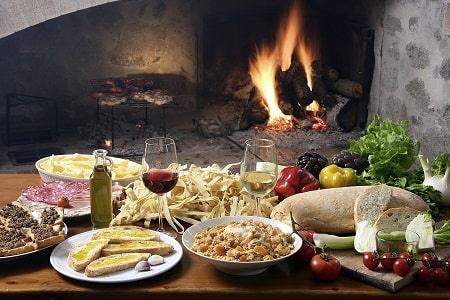
Back
in the 1980s there was a rush of interest in
Tuscan cooking that seemed to have more to do
with style and fashion than what was actually
la
cucina Toscana. It
began when the fashionistas poured into Milan
(which is not in Tuscany, but Lombardy) and
the designers, publishers, buyers and models
began frequenting three 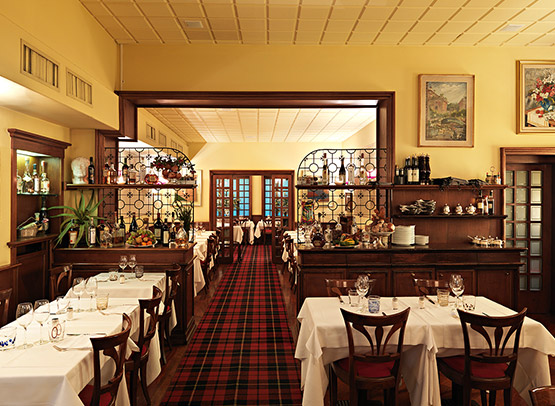 Tuscan
restaurants there—Bagutta, Bice (left)
and Da Giacomo, all within a spiked heel’s
throw of the fashion houses where the spring
and autumn shows were held. They drew an
international crowd and plenty of movie stars,
and by the time Bice opened an outpost in New
York in 1987 Italian designers like Armani,
Missoni and Dolce Gabbana had supplanted
French couturiers as the most exciting and
innovative in Europe.
Tuscan
restaurants there—Bagutta, Bice (left)
and Da Giacomo, all within a spiked heel’s
throw of the fashion houses where the spring
and autumn shows were held. They drew an
international crowd and plenty of movie stars,
and by the time Bice opened an outpost in New
York in 1987 Italian designers like Armani,
Missoni and Dolce Gabbana had supplanted
French couturiers as the most exciting and
innovative in Europe. 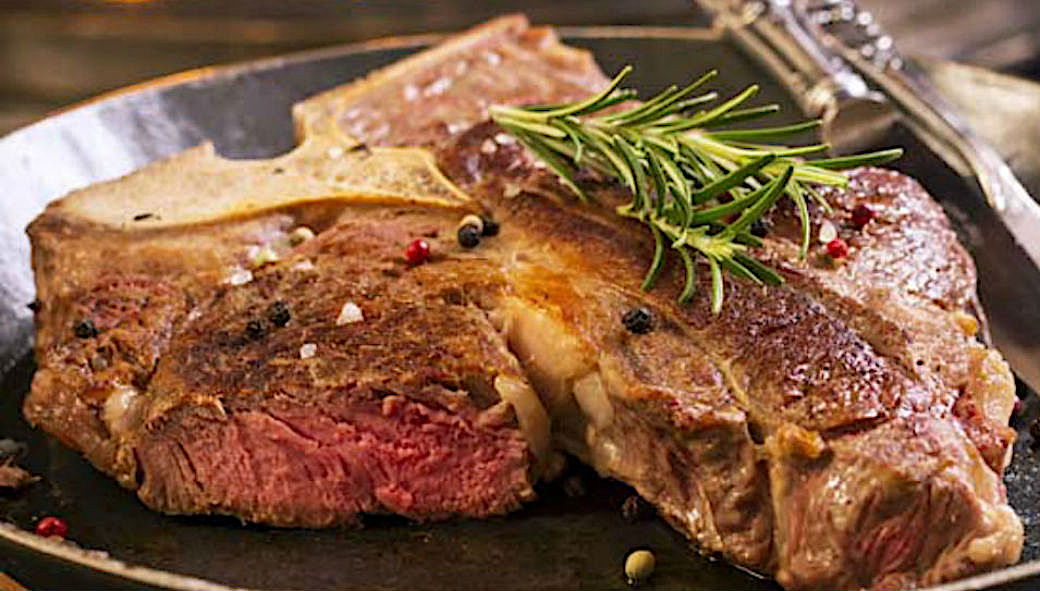
The menus were very basic, with reliable
Tuscan dishes like bistecca
alla Fiorentina, pollo alla mattone, and tagliatelle
con lepre (hare), eaten with Tuscan wines
like Chianti and Vino Nobile di Montepulciano.
So, there grew a myth about Tuscan food being
the best and the most stylish, as well as being
lighter than the food from, say, Bologna or
Naples. To be sure, Tuscan food is fairly
simple, with a few hearty dishes like stracotto beef
stew and cibreo
made with chicken livers and cockscombs. Grilled
meats and game are staples, and the wines of the
region do indeed go well with all of it.
The term “Tuscan Grill” had no particular
meaning, but was attached to a lot of good and
bad restaurants in America, while the fad faded
at the better restaurants in big cities. So, I
thought it was time to bring the subject up to
date by interviewing Giovanni Mazzei (below),
whose story is really one worth sharing. You
have probably heard of Giovanni’s family’s
property—Castello di Fonterutoli. Over the
past ten years, he has moved away from the
"family 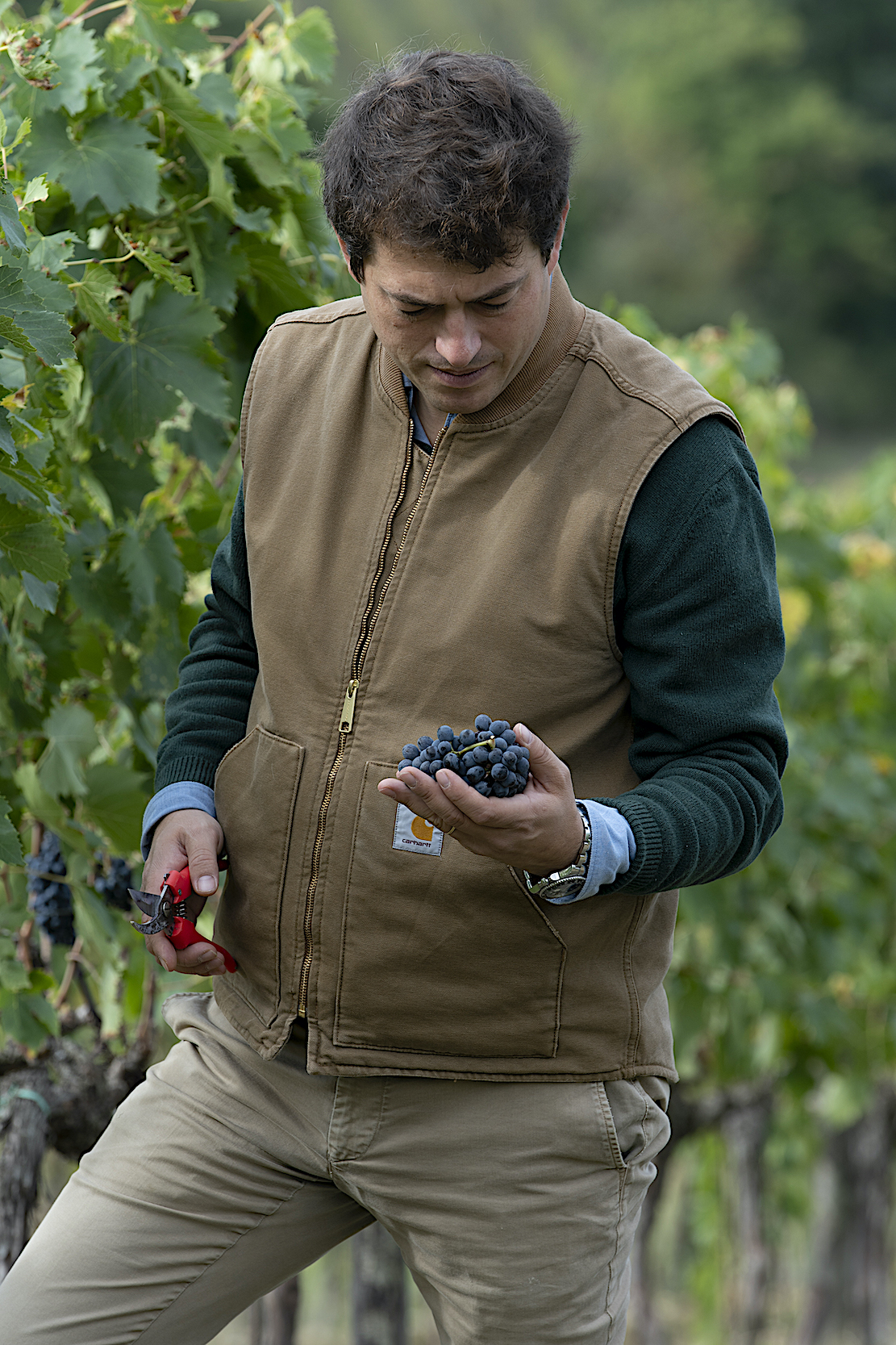 business"
and started his own wine, Ipsus, which was finally
launched last year after years of research
(including into biodynamics—a certification
that Giovanni is working towards). With two
vintages now out (2015 and 2016), Ipsus is
rapidly establishing a reputation as a "cult"
wine among connoisseurs.
business"
and started his own wine, Ipsus, which was finally
launched last year after years of research
(including into biodynamics—a certification
that Giovanni is working towards). With two
vintages now out (2015 and 2016), Ipsus is
rapidly establishing a reputation as a "cult"
wine among connoisseurs.
As a general rule, do you
believe that the food of a region goes best
with the wine of the region and why so?
I think it does to some extent.
Being able to match the purity and traceability
of a region’s food and wine, both born from the
same land, helps to express different aspects of
the same place. That is what is so enchanting
about Tuscan farming; we are so proud of our
region and what it has to offer, and we share
that through our produce. I do also believe that
the hallmark of a good wine is one that
expresses itself perfectly on its own, and this
was a major consideration when making
Ipsus. 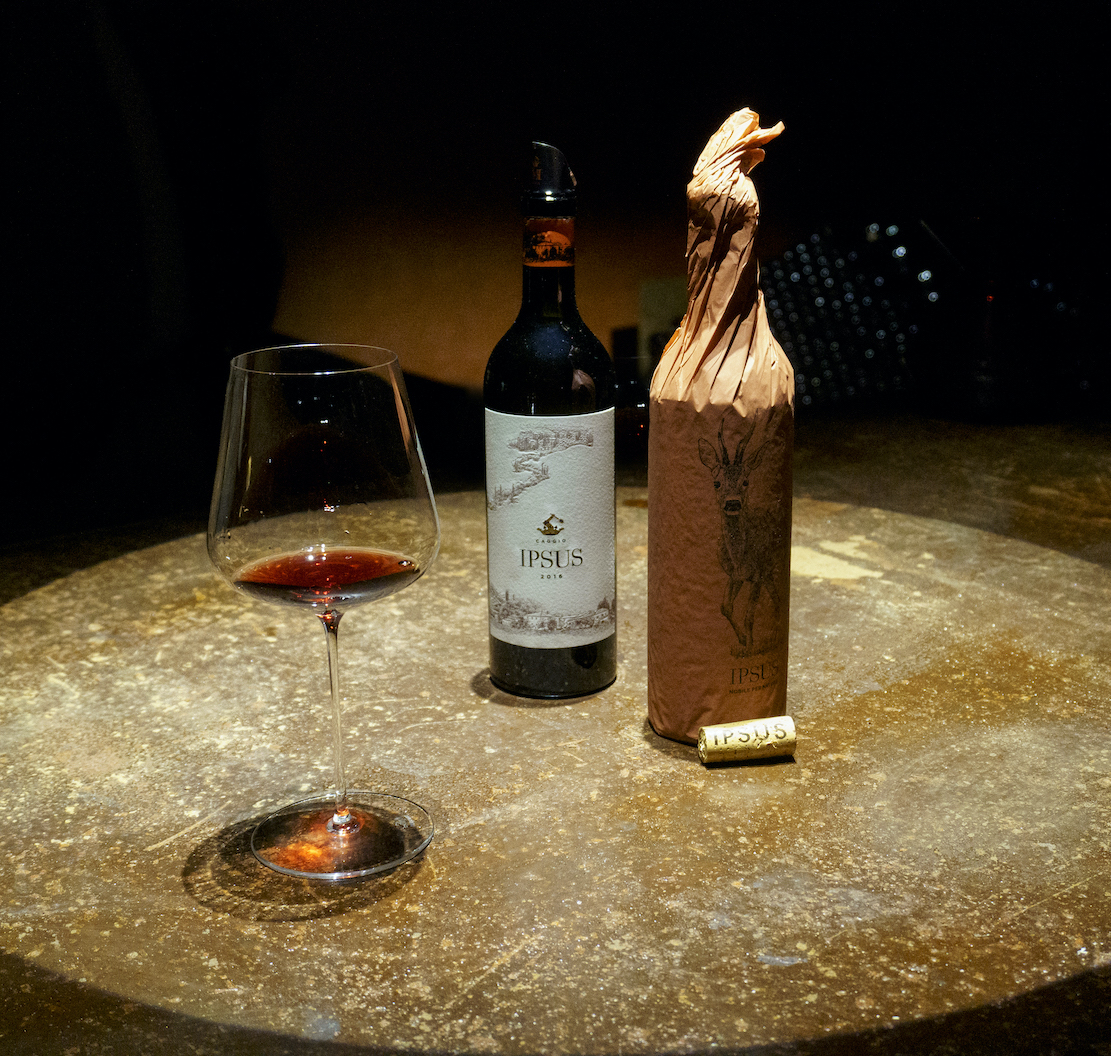
What are the aspects of Tuscan cuisine that distinguish it from the cuisine of other parts of Italy?
The prompt seasonality
of our cuisine is quite unique. With different
ingredients showing their best at specific
points of the year, there is always a different
recipe that is “in season.” In the
late summer we include tomatoes in a lot of
dishes, as they are 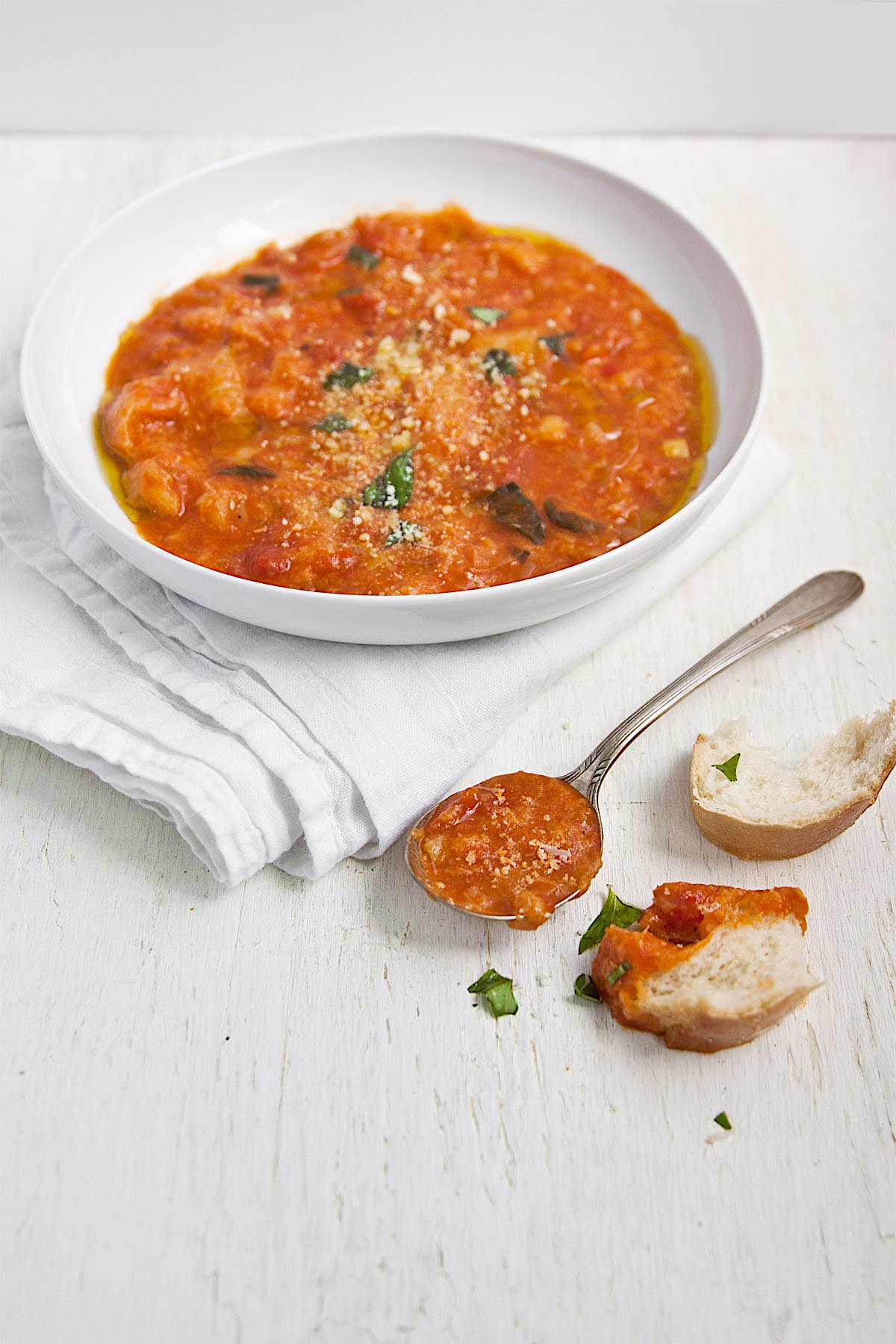 perfectly
ripe; for example, la pappa al
pomodoro, a traditional Tuscan bread soup
(left). For the colder months, one of our
specialties is eel. At our agro-tourism farm Il Caggio,
we cultivate a small amount of eel that we
collect during the winter to roast on the fire.
It’s a staple of the Tuscan household and the
wood fire is used a lot during the winter,
roasting boar, wood pigeon, and vegetables,
including zucchini, asparagus and
radicchio.
perfectly
ripe; for example, la pappa al
pomodoro, a traditional Tuscan bread soup
(left). For the colder months, one of our
specialties is eel. At our agro-tourism farm Il Caggio,
we cultivate a small amount of eel that we
collect during the winter to roast on the fire.
It’s a staple of the Tuscan household and the
wood fire is used a lot during the winter,
roasting boar, wood pigeon, and vegetables,
including zucchini, asparagus and
radicchio.
Our cuisine is based on a vast variety of
fish, meat and vegetable dishes, stemming from a
lot of history and executed with a lot of
creativity. They are dishes that absolutely
require local ingredients. Our history has led
to the simplicity of our cuisine, but it is
through this simplicity that we are able to get
creative in how we cook and assemble dishes.
How does the terroir of
Chiantis like Ipsus make the wines a perfect
match for the cuisine you just
described? 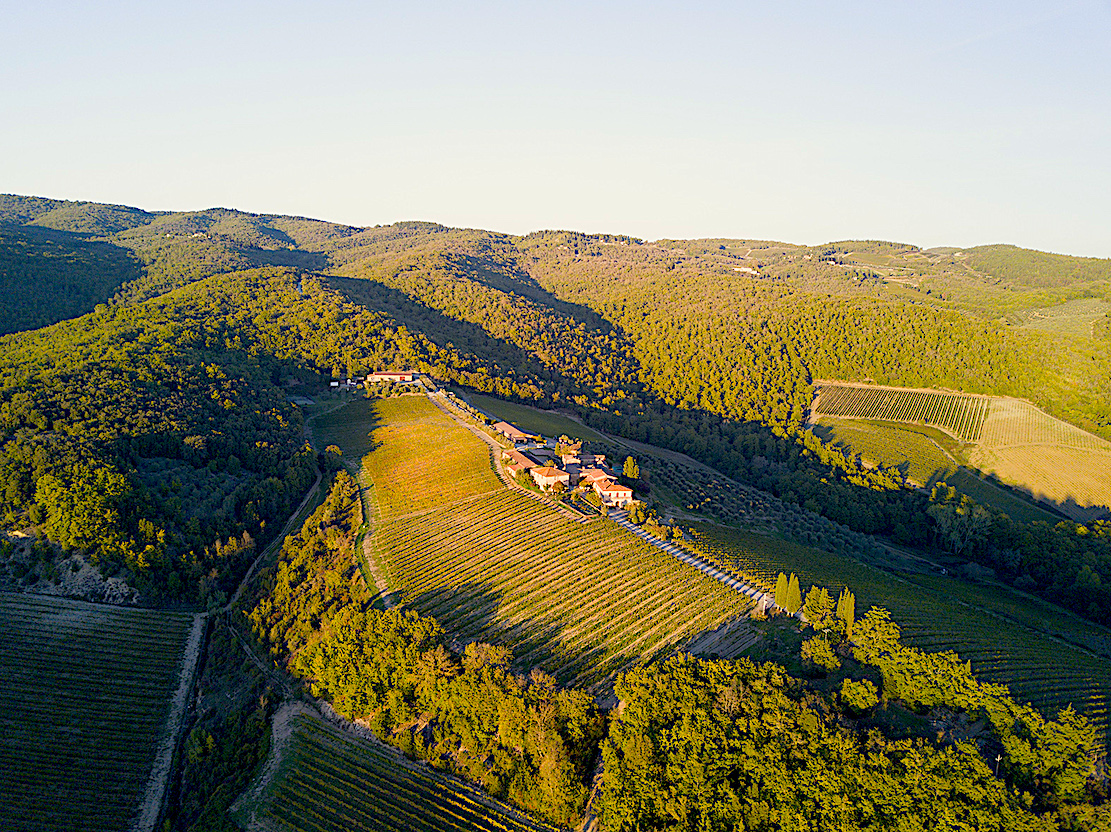
Like our farming, wine
growing in Chianti involves the subtle input of
man into nature to get the very best out of it.
We are not just growing grapes, we are grooming
the land to show off our terroir in our
wine—that is what creates the perfect pairing,
as our farmers are doing the same. The 6.5
hectares of Ipsus vineyards are divided
into six plots, all situated within a little
enclave, or “clos,” with the exposure south-east
to south-west. Our vines are over 35 years
old, and our soil comprises a mixture of clay
schist, calcareous marl, and alberese rock
fragments, while we benefit from a
well-ventilated Mediterranean climate. As well
as the altitude, the calcareous marl and the
alberese rock fragments contribute the silky
tannins, minerality and complex aromatics. The
clay, alongside the altitude, definitely
contributes to the unique freshness of the wine.
Combine all the elements and you have a
wine that is light but with lots of structure,
tension and an array of unique and elegant
aromatics. The uniqueness and variations of our
terroir leads to a complex flavor
profile—aromatics of blackberries, pine needles
and flowers, cherry, pomegranate, blood orange,
star anise, cinnamon, crushed stones and dried
flowers.
 In terms of
taste, I wanted with Ipsus to create a wine that
is constantly evolving while it’s
in your glass. Not only does this make it a
very entertaining wine, which matches the Tuscan
way of living, but also works extremely well
with our dynamic, seasonal cuisine. Indeed,
the Tuscan way of living is all about living
with nature. Leonardo Da Vinci (left),
Botticelli, Donatello, Giotto, Masaccio,
Brunelleschi, Beato Angelico, Pontorno,
Ghirlandaio, Vasari would
never have been the masters that they were if
they weren’t fully integrated in the beauty of
Tuscan nature.
In terms of
taste, I wanted with Ipsus to create a wine that
is constantly evolving while it’s
in your glass. Not only does this make it a
very entertaining wine, which matches the Tuscan
way of living, but also works extremely well
with our dynamic, seasonal cuisine. Indeed,
the Tuscan way of living is all about living
with nature. Leonardo Da Vinci (left),
Botticelli, Donatello, Giotto, Masaccio,
Brunelleschi, Beato Angelico, Pontorno,
Ghirlandaio, Vasari would
never have been the masters that they were if
they weren’t fully integrated in the beauty of
Tuscan nature.
Some say that Tuscan cuisine
is very simple and not as interesting or rich
in diversity as other parts of Italy, such as
Veneto, Lombardi, Bologna, Naples and Sicily.
Do you think this is true, and is simplicity a
Tuscan virtue? 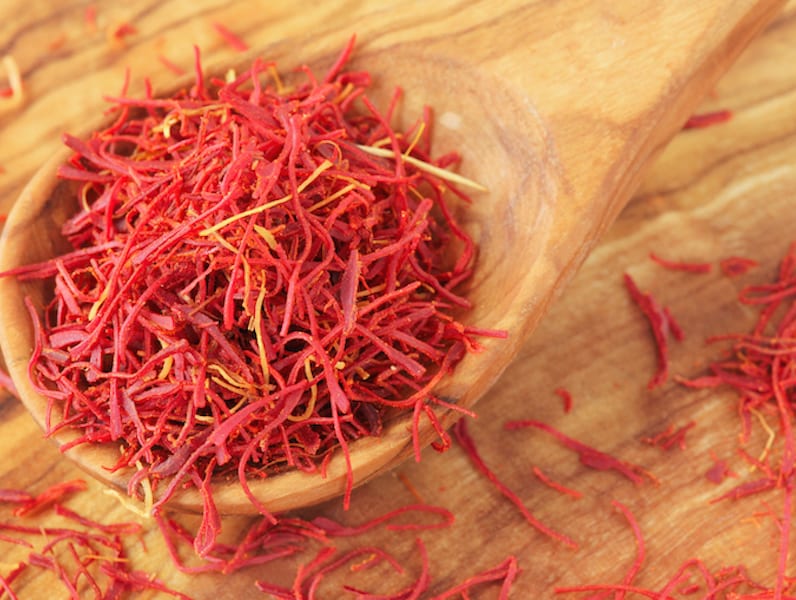
Simplicity is indeed a
Tuscan virtue , but the diversity in our
produce is also equal to none. For example,
in Tuscany there is an incredible selection of
different tomatoes available in the markets
(like the Fiorentini
or Pisanello)
that we would use for different dishes. Living
in central Italy between the Mediterranean Sea
and the Apennine mountains, we benefit from
amazing access to many different ingredients,
from fish to zafferano
(saffron, right). Our originality
is born from our dedication to the land. Every
season, every year we are looking at what we can
do from what we have around us.
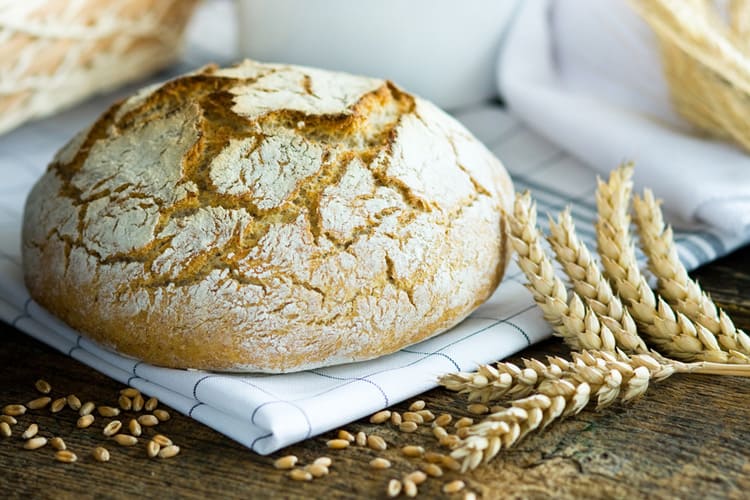
Why does Tuscan bread lack
salt?
Tuscan cuisine is quite salty, so
this balances the meal. But looking back on
history: There are also various stories about
periods where there were salt shortages, or high
salt taxes, and so the people instead baked
bread without it. This resulted in the Tuscan
people looking to other flavorful and salty
foods in our cooking, bringing us to today, with
good balance between these foods and our bread.
What are the innovations in
Chianti, and Ipsus, that have changed it for
the better over the last 10 years and how can
a Chianti Classico compete with the so-called
super Tuscans? 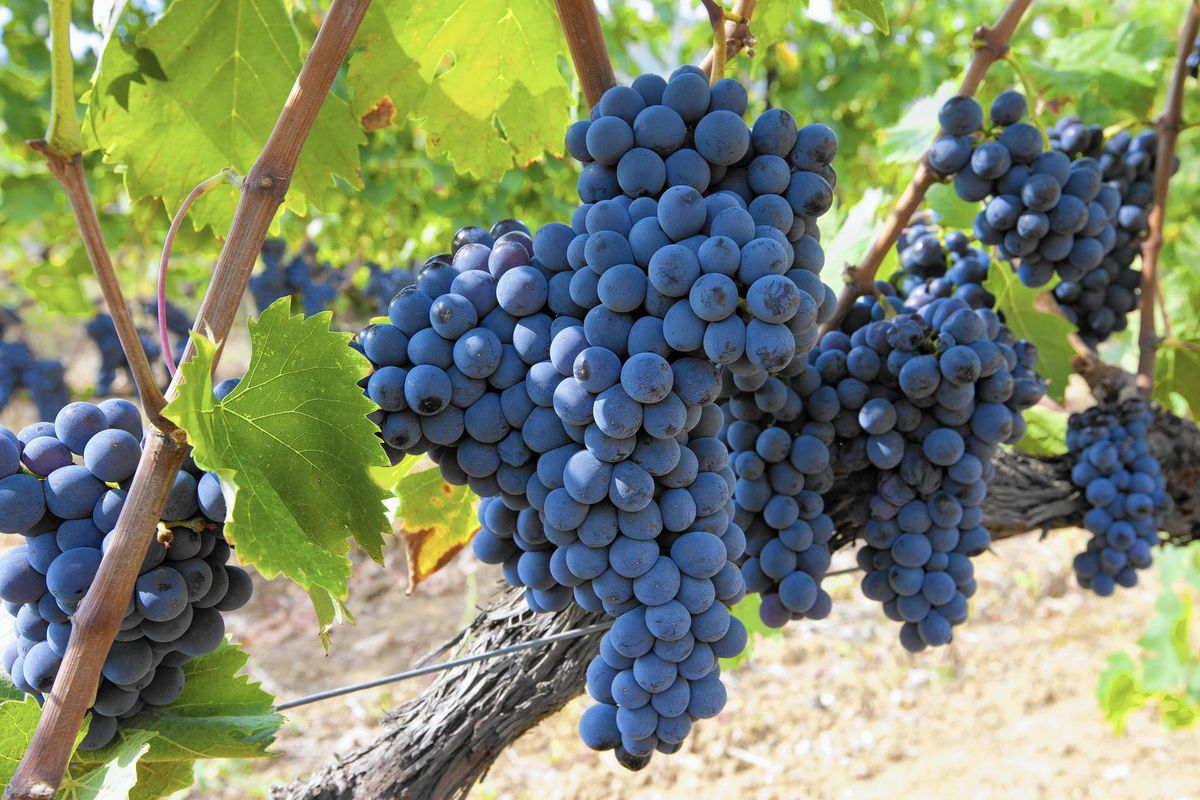
First, viticulture has seen
significant change in the last 40 years. In
Chianti Classico we witnessed a real revolution
that brought us to an incredible selection of
biotypes of Sangiovese (right), which for
me is really the key to creating the style of
wines that I am looking for—a “Tuscan purity.”
Over the 15 years since we purchased the vine
parcels around Il Caggio,
we have acquired more knowledge on how to let
the vines express themselves, and how to
interfere as little as possible throughout the
winemaking process. This to me is how to achieve
a true expression of Chianti Classico.
Can you recommend some good
Tuscan cookbooks in English?
 Pellegrino
Artusi’s La
Scienza in Cucina e l’Arte di Mangiar Bene (“Science
in the Kitchen and the Art of Eating Well”) is
the “bible” of Italian cuisine. The book was
first published in Florence in 1891. I would
also recommend the infamous Tuscan character
Fabio Picchi’s 2016 cookbook Papale
Papale: Ricette Che Salvano l’Anima (“Papale
Papale: Thoughts
and Recipes to Nourish the Soul”).
Pellegrino
Artusi’s La
Scienza in Cucina e l’Arte di Mangiar Bene (“Science
in the Kitchen and the Art of Eating Well”) is
the “bible” of Italian cuisine. The book was
first published in Florence in 1891. I would
also recommend the infamous Tuscan character
Fabio Picchi’s 2016 cookbook Papale
Papale: Ricette Che Salvano l’Anima (“Papale
Papale: Thoughts
and Recipes to Nourish the Soul”).
How is Agro-tourism doing in
Tuscany in the Covid era?
Even with Covid-19, we have seen a
growth in agro-tourism within Tuscany. I do
believe that, due to the pandemic, people are
desperate to pursue family, nature and artisan
values, and I think that agro-tourism has
continued to accelerate as it is the best way to
be surrounded by, and engaged with, nature. 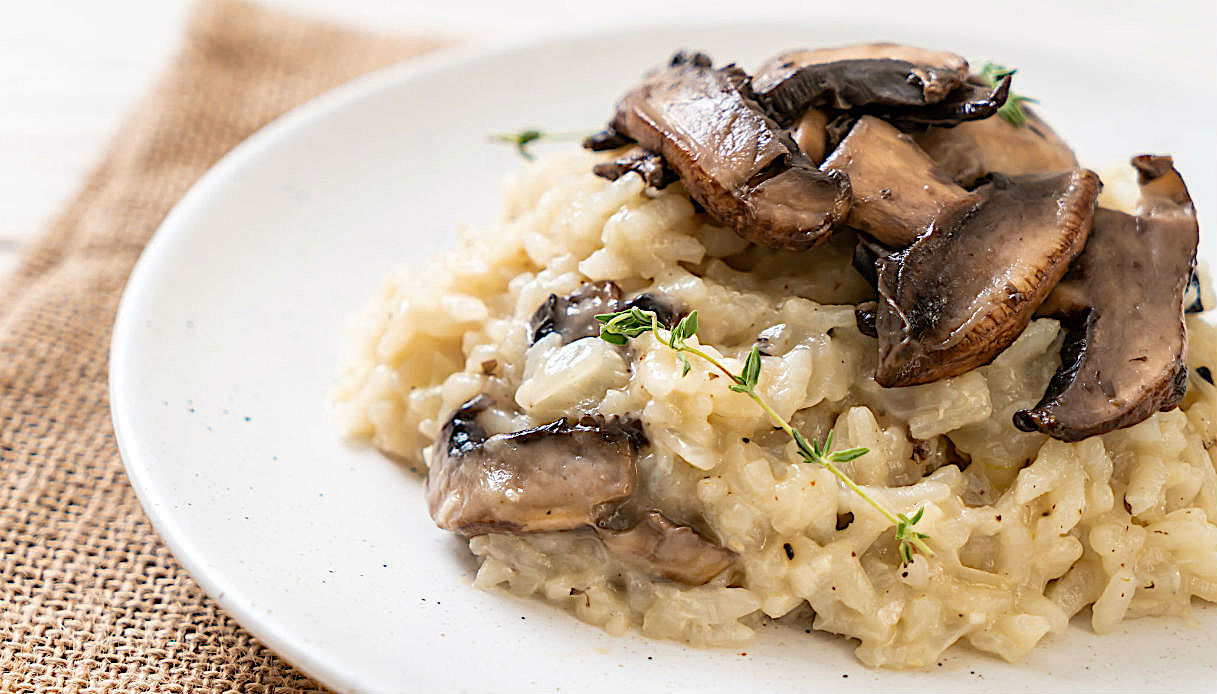
What do you like to cook and
do you choose the food first and then the
wine, or the wine first and then the
food?
My favorite dish to cook is
risotto. When you are making a risotto, you really make
it. You are not baking, boiling or
roasting; you have to be there with it
constantly, otherwise it is ruined. It’s the
same principles as winemaking. You always have
to be around the vines, constantly monitoring
them in order to get the best out of them. It is
very romantic.
Surprisingly, I choose the food and the
wine almost independently. I pick a wine that I
am eager to try or am particularly enjoying at
the time, and otherwise try to let go of strict
food and wine pairings. I think if the food and
wine come from the same soil, the same spirit,
then you should be able to enjoy them together.
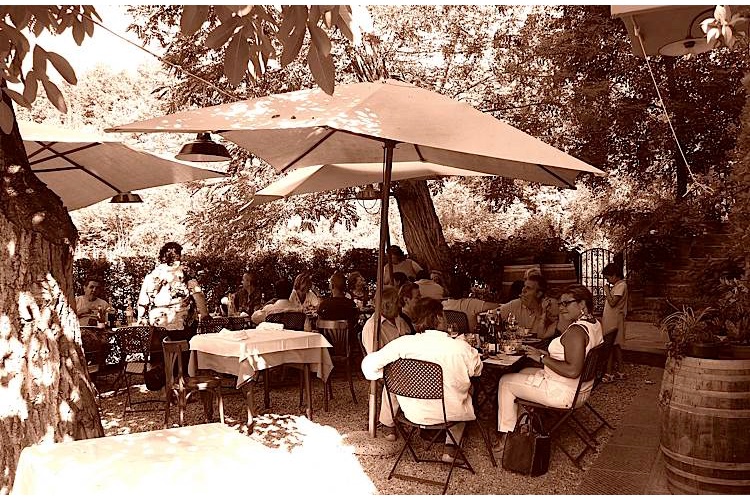
Can you recommend some of the
best restaurants in Tuscany, the finest and
the really favorite trattoria’?
Le Panzanelle in Radda in Chianti
Classico. Ristorante Padellina in Strada (left)
is also great. It is run by brothers, Alvaro and
Rolando Parenti.
Alvaro has a passion for Dante (the
Medieval Italian poet and philosopher), and he
often emerges from the kitchen to recite from
heart verses from the Divina
Commedia to the dining room.
What are your favorite restaurants in
Florence?
The finest restaurant in Tuscany, I
must say, is Cibreo (below) in Florence.
I also like Cammillo, Belguardo, Vecchia Bettola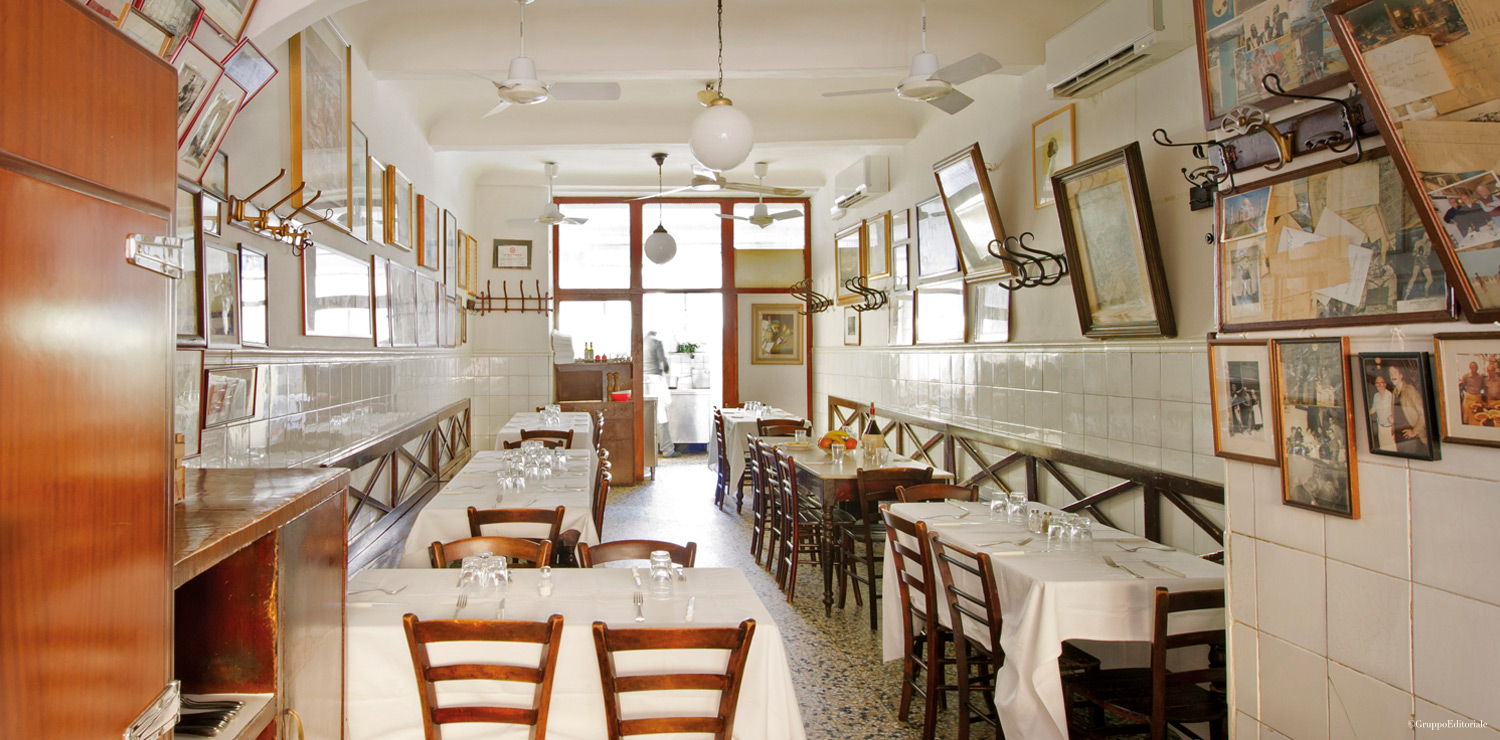 ,
Sostanza detto Troia (right) and Buca
dell’Orafo.
,
Sostanza detto Troia (right) and Buca
dell’Orafo.
Do the DOCG regulations still
prevent certain grapes from being used in
Chianti Classico? Is Trebbiano ever used
anymore?
Yes, producers can use only red
grapes to make Chianti Classico, with a minimum
of 80% of Sangiovese. Trebbiano is not used in
DOCG wines,
but there is a lot of great opportunity
for the estates that want to make it on its own
[as a white wine], and I’m sure we will witness
some great Trebbiano coming out of the region in
the future.
What is the governo process
and it is used anymore?
Governo is a winemaking
technique that started in Tuscany over 700 years
ago. It involves saving a batch of harvested
grapes and allowing them to partially dry. This
is said to increase the richness and stability
of the wine. The process is not used anymore in
Chianti Classico, and our producers aren’t that
familiar with it, but it is still used in some
areas of Tuscany.
❖❖❖
AMALI
115 East 60th
Street
212-339-8363
By John Mariani
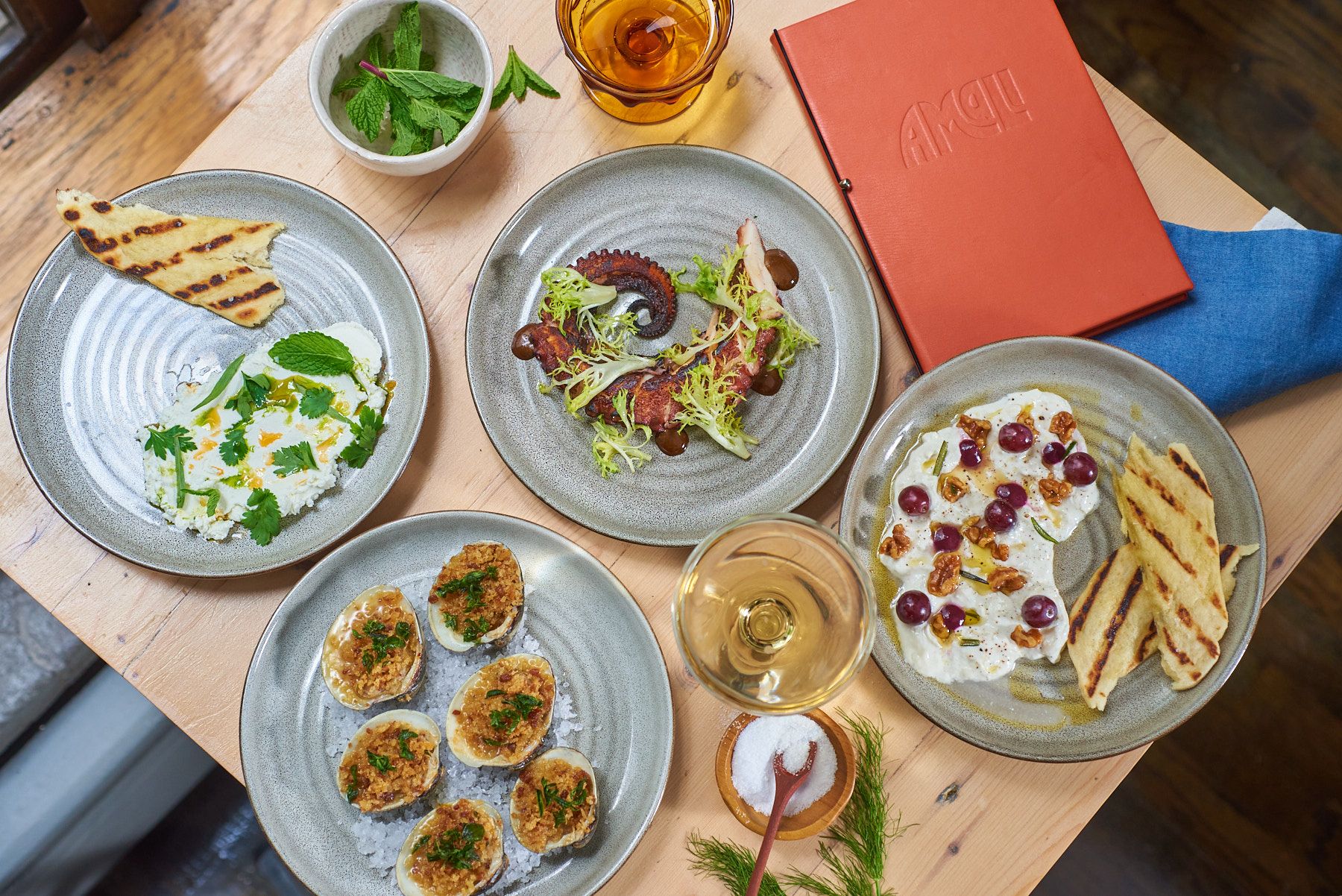
New
Eastern Mediterranean restaurants are now in the
media spotlight, but for ten years now, Amali
has been one of midtown Manhattan’s most
enduringly popular and stylish restaurants of
the genre, with a handsome dining area with
rustic slatted wood, marble bar counter and a
sweeping banquette wrapped in a motif of
blue-and-white figures. Currently there is also
outdoor seating.
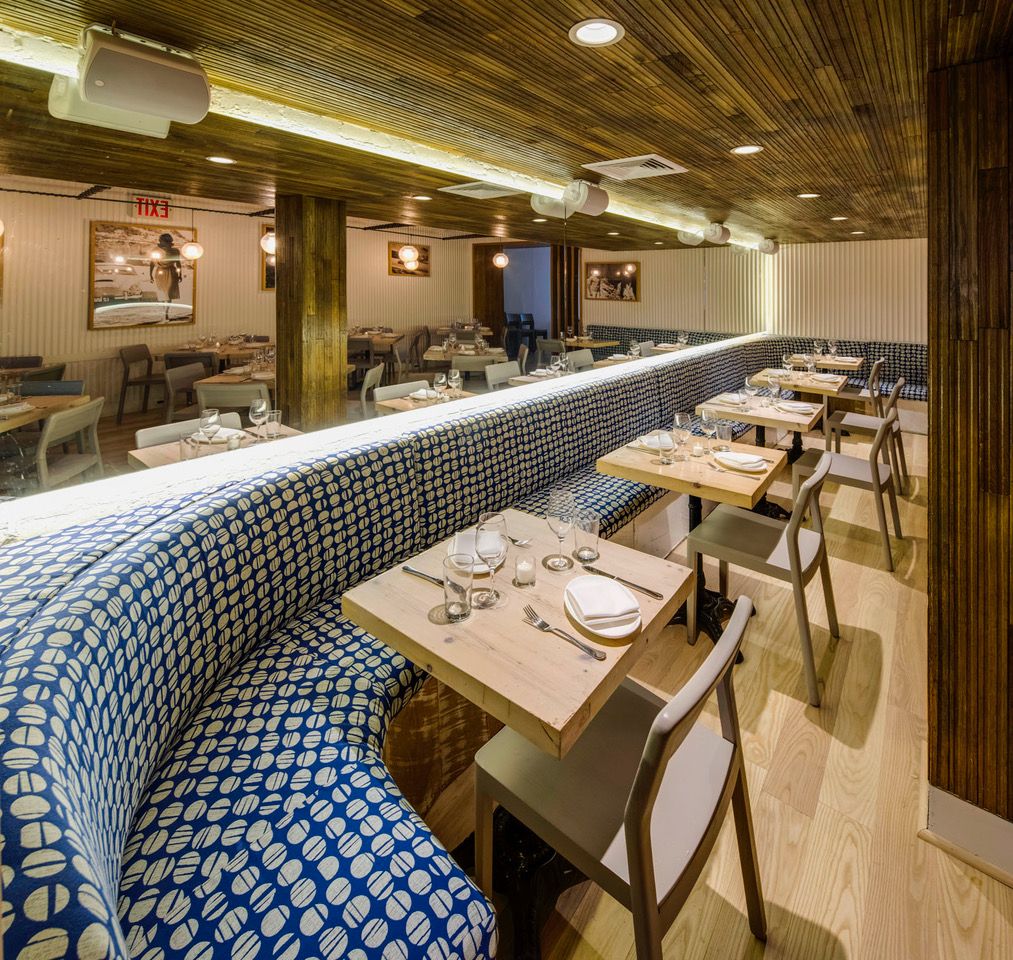 Civetta Hospitality partners James Mallios,
Kylie Monagan, Michael Van Camp and Tanya Saxena
run Amali, and three other restaurants, on the
principle that people come to have a good meal and
a happy one, without pretense. You may be greeted
by the
Civetta Hospitality partners James Mallios,
Kylie Monagan, Michael Van Camp and Tanya Saxena
run Amali, and three other restaurants, on the
principle that people come to have a good meal and
a happy one, without pretense. You may be greeted
by the 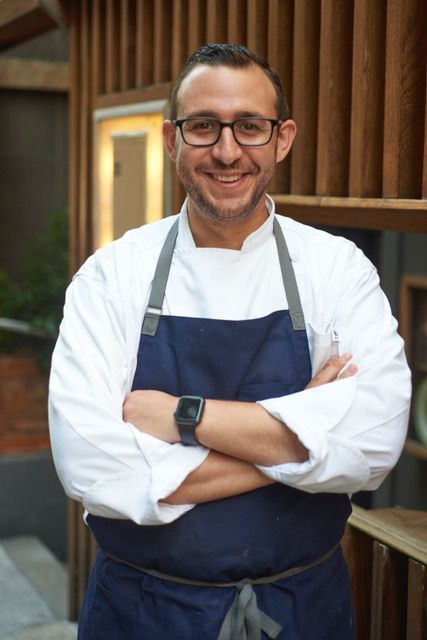 amiable Saxena
and will be well taken care of by a diverse staff.
amiable Saxena
and will be well taken care of by a diverse staff.
But the best news is that Amali has
acquired a terrific new chef with an intriguing
pedigree. Alex Tubero was born and raised in South
Florida, in a Jewish family whose mother, he sadly
admits, was not the best cook in town. But he fell
in love with cooking the local seafood, and, after
pursuing a degree in psychology, his interest
flared after reading Thomas Keller’s French
Laundry Cookbook, prompting him to attend
the Culinary Institute of America in Napa, which
led to a stint at Keller’s Ad Hoc in Yountville,
before moving to New York City, where he worked at
Betony and Union Square Café , as well as at
Legacy Records.
Tubero brings both his experience and his
love of Middle Eastern flavors to the menu,
recasting some of the traditional dishes while
adding a good deal more that is brand new. The
latter is evident the moment you taste his yeasty
sesame seeded bread (left), 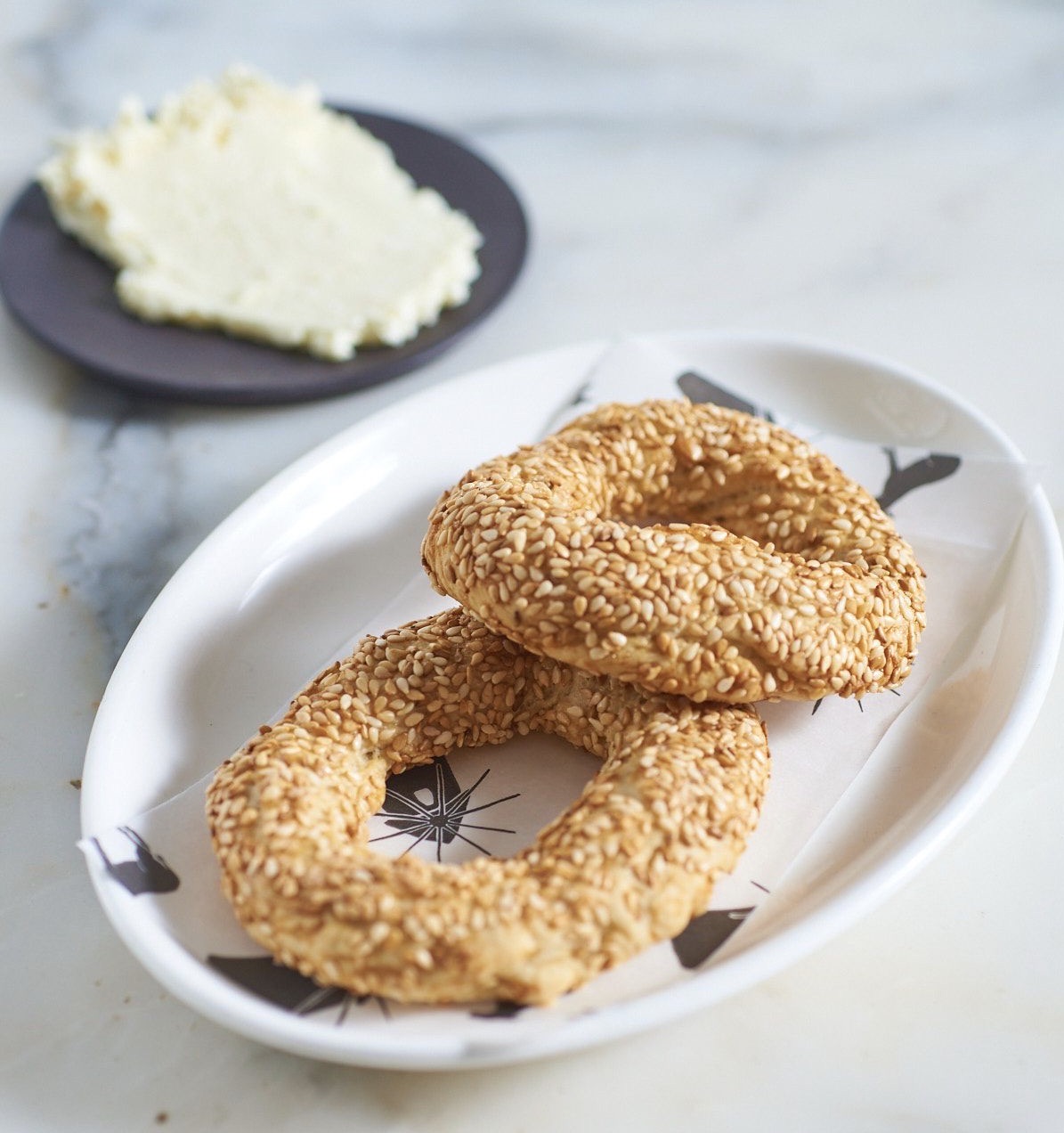 slathered
with fine yogurt-whipped butter, which has
something of the flavors and textures of a soft
pretzel and a bagel. It is very difficult not to
gorge on these breads alone.
slathered
with fine yogurt-whipped butter, which has
something of the flavors and textures of a soft
pretzel and a bagel. It is very difficult not to
gorge on these breads alone.
In
the same firmament are the warm pita breads, which
elsewhere can be rather dry and flaccid. At Amali
they are puffy and smell of the smoky oven, ideal
for scooping up the various mezze
like impeccably fresh herbed labneh
with a whipped pistachio feta, chili and toasted garlic ($16);
autumn squash hummus with pumpkin seeds and sage
($19); and a delectable wild mushroom caponata
of Sicilian vegetables with pine nuts and
Parmigiano and currants ($18). There is a platter
of all the mezze
for $54.
Bright and refreshing is the salad of
lettuces with fennel, radish and sesame
vinaigrette ($16). The don’t-miss appetizer is the
dish of Long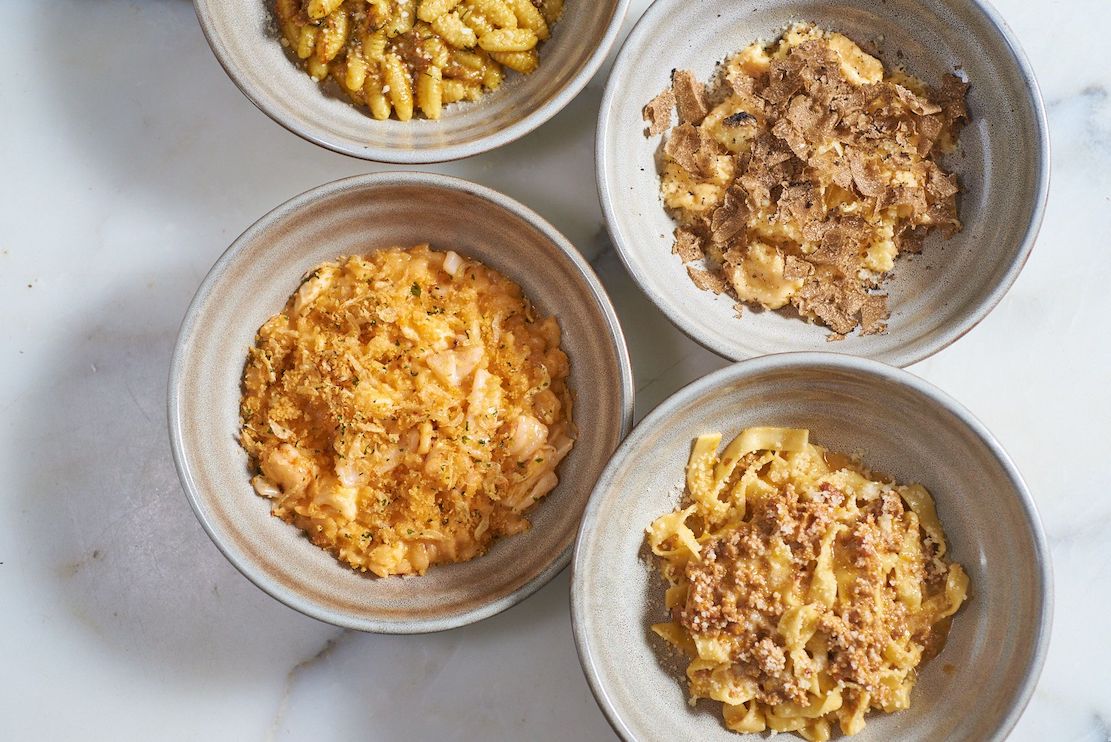 Island clams
lightly roasted and topped with crispy prosciutto, breadcrumbs,
marjoram and an unexpected orange butter ($16).
Island clams
lightly roasted and topped with crispy prosciutto, breadcrumbs,
marjoram and an unexpected orange butter ($16).
If not of Eastern Mediterranean origins,
Amali’s pastas (right) are very good, with
the texture of each individual shape prepared
impeccably, as with the spaghetti
alla chitarra with a tomato confit, basil
and pine nuts ($28); luscious ravioli with Koginut
squash, lobster mushrooms and an abundance of
Maine lobster ($44); and tajarin
noodles with chestnut cream and shaved white
truffles now in season (market price).
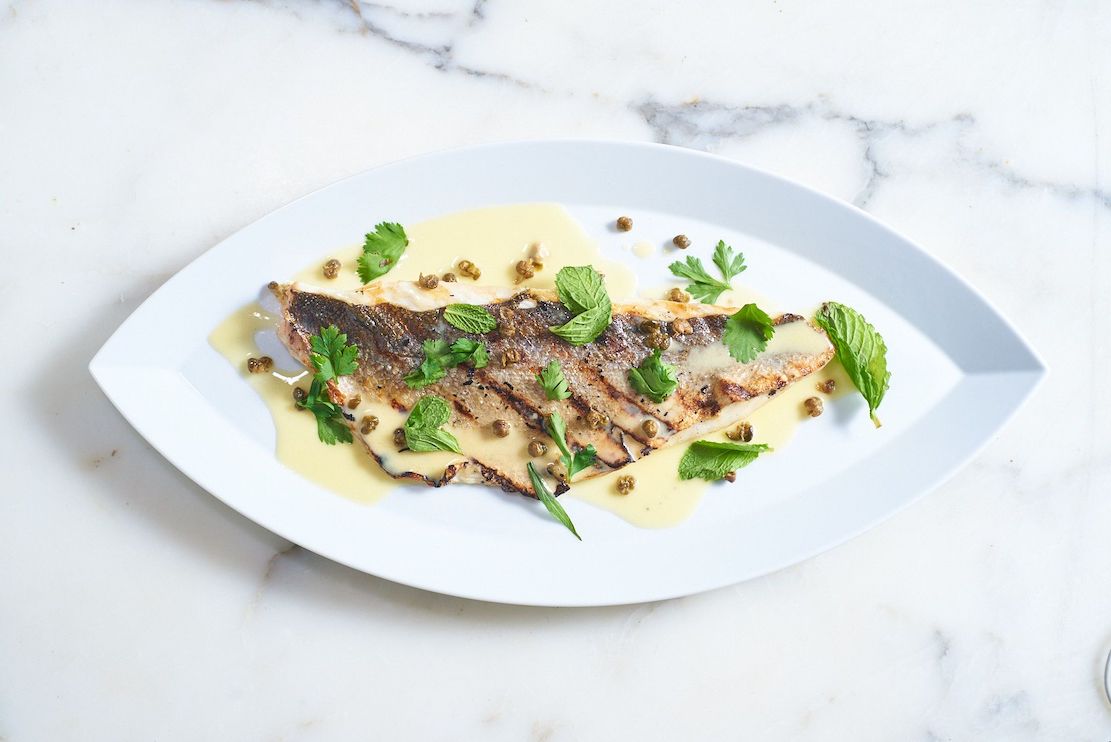 Amali does not follow the style of the
outrageously expensive Greek restaurant
Estiatorios Milos on the West Side that pioneered
a display of
fresh fish on ice. Instead it features the
daily catch, which includes a superior Canary
Island-raised branzino (left) cooked with
capers, Mediterranean herbs and a finely wrought
beurre blanc. It’s $98 but, given its size, it
easily served our party of four one night.
Amali does not follow the style of the
outrageously expensive Greek restaurant
Estiatorios Milos on the West Side that pioneered
a display of
fresh fish on ice. Instead it features the
daily catch, which includes a superior Canary
Island-raised branzino (left) cooked with
capers, Mediterranean herbs and a finely wrought
beurre blanc. It’s $98 but, given its size, it
easily served our party of four one night.
Among
the meat courses I recommend the quinoa-crusted
breast of duck with Anjou pears and hazelnuts
cooked down with Cognac ($45). Despite my
disinterest towards filet mignon as a beef cut,
Amali’s is as good as any, helped along with
maitake mushrooms and sweet baby onions ($54).
At least share one dessert, like the olive
oil cake with gelato, candied orange and fennel
pollen ($23), or the chocolate four-layer cake (below)
with intense, whipped ganache ($14.) Oddly enough,
there are none of the phyllo pastries so
ubiquitous in Mediterranean restaurants.
Amali's extensive beverage program is
overseen by the ebullient Despina Karapostolaki,
who manages to obtain some very
out-of-the-ordinary Greek wines that include a
rich Hatzidakis Santorini Famiglia 2020, along
with bottlings 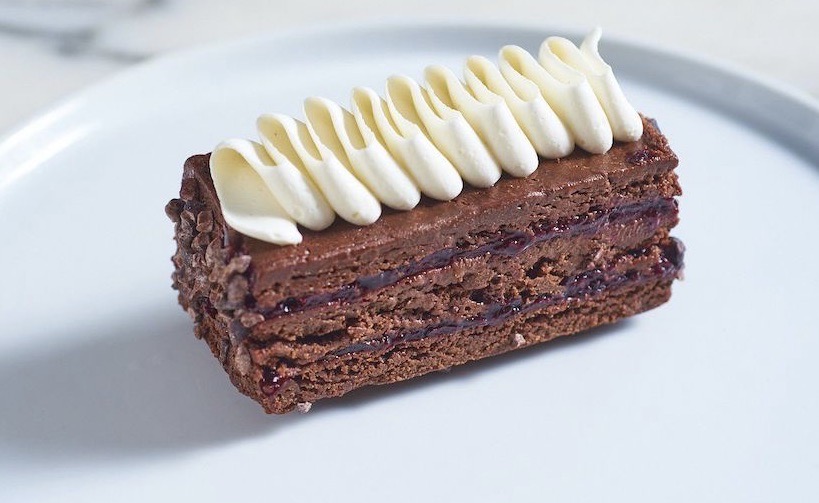 from
Macedonia, Peloponnese, Thessaly, Mykonos and the
tiny island of Tinos.
from
Macedonia, Peloponnese, Thessaly, Mykonos and the
tiny island of Tinos.
Amali can get loud at peak times but there
is currently outdoor seating, and we sat at a
raised table next to the bar that afforded a
quieter atmosphere. By 9 o’clock things are toned
down.
Tubero
walked a winding course to become chef at Amali,
and if you have a chance to meet him outside the
kitchen, you will find his affable intensity all
you need to know about how transformative he has
been with the menu here. Evolution is not
inevitable in restaurants a decade or more old,
but at Amali, everything seems brand new.
Amali is open for lunch Mon.-Fri.,
brunch Sat. & Sun. and dinner nightly.
Note: NYC Health Dept. rules require both staff and guests 12 or older to show proof they have received at least one dose of a COVID-19 vaccine.
CAPONE’S
GOLD
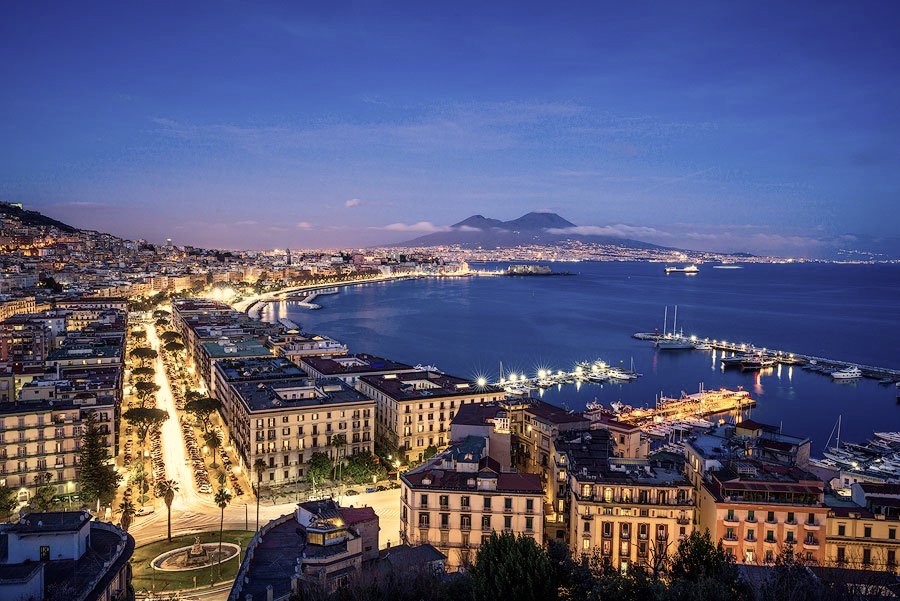
It
was a cool evening with a light autumn breeze. Katie
and David got to the marina a few minutes early
and asked where to find Iacobello’s boat, named
Stella del
Mare, Star of the Sea. As
they approached they saw an older man standing
aft, looking out at the bay.
“He’s wearing a fedora?” said Katie,
trying not to laugh. “This guy looks straight
out of central casting for an Italian mobster.”
“I told you, these guys love to look the
look they pick up from movies. Looks good on
him, though.”
David called out, “Signore
Iacobello?”
The man on the boat turned and waved for
them to come aboard, graciously helping Katie
over the side of the boat, which for her
qualified as handshake enough. David got onboard
and introduced himself but no handshake was
forthcoming.
“It’s a beautiful night for a little
sailing under the moonlight, eh?” said
Iacobello, then he called to a young man onboard
to start the engine and loose the boat from its
moorings, easing it away from the slip.
The Stella del
Mare was no yacht, probably converted from
a fishing vessel, with few signs of refitting or
embellishment.
Its engine puttered till they cleared the
harbor. Iacobello
said little beyond commenting on the calm water
and a moon that was nearly full.
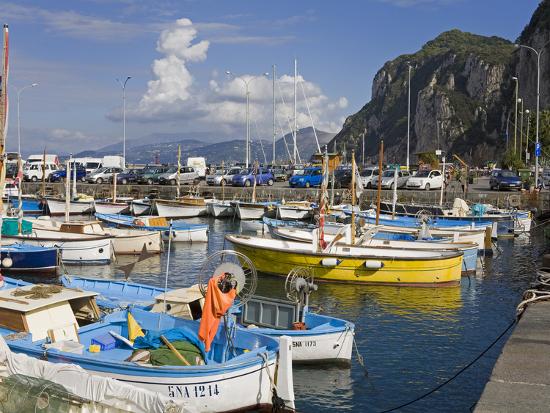 “So I think I know why you wanted to see
me,” said Iacobello.
“So I think I know why you wanted to see
me,” said Iacobello.
“Capone’s gold.”
“Ah, so you’re what they call a ‘gold
digger?’” asked Frankie Switch, looking straight
at Katie.
“In a manner of speaking,” she answered.
“Well, I don’t have it. If I
did, I’d own a better boat.”
“Do you know who might, or where it is?”
asked David. “We were told by Officer Frascella
you talked about it a lot when you were in
Philly.”
“You know Frascella?”
“Only by reputation and on the phone.
Says he was once a runner for the Philly mob and
that he heard you say you knew where Capone’s
gold was.”
Iacobello shrugged. “I
have my ideas.”
“Well, Signore Iacobello,” Katie said in
Neapolitan dialect, “could you share
those ideas with us.”
“Tu
parli Italiano?”
“A little. Con un accento
Napoletano, I’m afraid.”
Iacobello turned to the man steering the
boat and said, “Portarci a
quella piccola insenatura vicino a Sorrento.”
David leaned in towards Katie and asked,
“What’d he say?”
“He told the guy to take us to a little
cove near Sorrento. But .
. .”
“But what?”
“He wasn’t speaking Neapolitan. It
sounded like Sicilian.”
“So?”
“I thought he was Neapolitan and, if he
was, he’d be part of the Camorra, wouldn’t he?”
Iacobello interrupted them and said, “So,
Detective Greco, tu parli
Italiano?”
“Not enough to carry on a conversation so
I know what you’re talking about.”
“And you were chief detective on the
Italian mobs in New York and you didn’t speak
Italian?” asked Iacobello, shaking his head.
“We had translators who understood
Sicilian. So,
can you tell us anything, or not?”
Iacobello shrugged and said, “And, if I
tell you, what can you do for me?”
David had expected this. “Frankie, I’m an
ex-cop. There’s nothing I can do for you.
Besides, you seem to be able to come and go as
you please.”
Iacobello laughed. “Oh, sure. And every
time there’s a robbery or shooting in Naples, I
get a visit from the Carabinieri. And
they treat me with no respect.”
David stifled his urge to tell the
mobster what he thought of him and his murderous
past. Respect was something wise guys paid for
or murdered enemies for.
“There’s nothing I can do about that.”
Iacobello looked David squarely in the
eyes and said, “You had a big reputation in New
York, eh? You had respect from your friends and
maybe even some of the wise guys gave you credit
for having balls.
But don’t for a minute think you weren’t
hated by the wise guys. They hated you for
turning guys by threatening them, hated the
goddamn wiretaps, and we all know why some of
the guys were never even arrested and how the
guys on your side got rich off the mob.”
“I wasn’t one of those crooked cops.”
“Maybe not, maybe so. But you’re still a
disgrace being an Italian going after Italians.
You should be ashamed of yourself.”
David was seething but felt that any
insult to Iacobello would kill any chance of
finding out more information on Capone’s gold. Then
again, he was beginning to think this whole
meeting was a farce.
“Frankie, if you have something to tell
me, tell me.
If not, don’t waste our time. It’s been a
nice night sailing around the bay but we’ve got
work to do.”
Iacobello chuckled and said, “Okay,
Detective Greco. Here’s what I know.”
“What you know or what you believe?”
asked
Katie.
“Prendere per quello che vale la
pena.”
Katie turned to David and translated:
“Take it for what it’s worth.”
“What I do know,” Iacobello began, “is
that the gold went to Italy.”
“How did they get it here?” asked David.
“I have no idea. They had planes and
ships in those days. It didn’t come over in Al
Capone’s pockets.”
“And what do you think happened to the
gold when it got here?”
“It came here, to Naples, or at least
somewhere in Campania. The capos
here all say that. You remember Vito Genovese?
He had control of the gold. They
say he sold it to the Americans when they pushed
out the Germans, then he went back to America
and set things up there.”
“So, you’re saying all the gold was
shipped back to the U.S. by Genovese and the
federal officials?” asked Katie, realizing that
Iacobello had only snippets of the story
correct.
“No, what I heard was that Capone saved
some of it somewhere for after the war. Kept a
stash away from the Camorra. The
rest Genovese sold back to the feds.”
Both Katie and David knew there was
nothing but a kernel of truth to Iacobello’s
story, which had probably been embellished over
the years as part of mob folklore.
“So that’s all you know?” asked Katie,
speaking Neapolitan.
Iacobello nodded and shrugged. “That’s
about it. The Army and the feds got in bed with
Genovese and you know the rest of the story.
What I could never figure was why Capone didn’t
try to collect the money for his own family.”
David was not about to tell Iacobello
anything more about Capone’s plan for extortion
and collection of the reward. “So,
we’re done here, Frankie?”
“Not quite yet,” said Iacobello, then, in
Sicilian, to the boat pilot, “Va bene ,
si fermano qui.”  The pilot shut down the
engine, which sputtered to a halt.
The pilot shut down the
engine, which sputtered to a halt.
Katie grabbed David’s arm. “What’s going
on?”
David said nothing but pushed her away
from him.
Iacobello said, “Ah, before we go back to
Naples, I want you to meet a mutual friend.” In
Sicilian he called out, “Uscire,
Giovanni!”
From below deck emerged a man in American
bluejeans and t-shirt. It was
John Frascella, with a pistol in his right hand.
“So we finally meet in person, Miss
Cavuto, Detective Greco. And my friend Frankie.”
Katie’s mind was racing but David knew
exactly what was about to happen.
“Y’know,” said Frascella, “I wasn’t sure
you believed me when we spoke on the phone, but
I alerted Frankie here if he found out you were
coming. He
had a friendly cop at the airport monitor things
and report back if you arrived. Then
Frankie called me and I rushed over, just to
meet you two.”
“With a Beretta in your hand? Not
your police revolver?”
“C’mon, I left that behind when I left
the force. Picked this beauty up as soon as I
got to Frankie’s place. The new M9, military
issue, beautiful gun, not too heavy, nice long
magazine.”
“So how’s this going to go down,
Frascella?” asked David.
“Well, first you put your hands in the
air, then the pilot here ties you both up. Then I
think
Frankie’s going to ask me to shoot you.”
Katie gasped and said, “But I thought you
guys never shoot cops!”
Frascella laughed and said, “We usually
don’t . . . on the cops’ own turf. But
now we are far far away in sunny Italy.”
“Why now?” asked David. “I’m of no
interest to you here.”
Iacobello stepped forward and said, “Oh,
we have no fear of you anymore, but some debts
need to be paid.
You put a lot of our guys away. We
couldn’t touch you at the time because of that
bullshit code that you never kill a cop. But
now, you’re not a
cop and I can do whatever I want with you.”
Katie was shaking as the pilot started to
tie her hands with plastic rope.
David appeared calm and said, “I was
never even in Philly, Frankie. And I never went
after anybody in the Camorra.”
Iacobello feigned shock. “But, Detective
Greco, I was never in the
Camorra. I was Cosa Nostra, Mafia.”
Then Katie understood why he’d spoken
Sicilian, not Neapolitan.
“Then what are you doing living in
Naples?” asked David.
“I like it here. I’m retired, like you,
but sometimes I do favors for old friends, and
since the Camorra guys don’t like Mafia anywhere
near Naples, I’ve kind of blended in.”
“And Frascella was always working with
you guys,” said David.
“Such a smart asshole you are,” said
Frascella, waving the Beretta. “I never left the
mob behind in Philadelphia. I tried—God knows I
tried—to get into the rackets squad, just so I
could be the mob’s guy on the inside, but it
didn’t work out. Funny thing is, when I was out
taking pictures at Capone’s house, it really was a
coincidence that I was there when Katie was
there. I only learned about her when Cunningham
began asking me questions about my being out
there. But from what I learned from Cunningham,
and, of course, from buttering you up on the
phone, I knew it would go real well for me if I
could have a hand in whacking you outside the
United States.”
“Johnnie’s got a real future with us,”
said Iacobello.
“So,” said David, “this was never about
Capone’s gold for you two creeps? This
was all about getting to me?”
“Yeah,” said Frascella, “and sadly, Katie
here is going to have to be collateral damage.
Shame to waste such a good-looking woman. The
two of you, two American tourists, will just . .
. disappear over the side and the Carabinieri
will inform your families, do a little
investigating, make a report, close the file.
Over and forgotten in six weeks.”
“And just to make it a little easier for
you,” said Iacobello, “it was mostly bullshit
about me knowing anything about the gold. The
Genovese story was true, I think, but I have no
fuckin’ idea if there’s any gold around here.”
“Well,” said Frascella, matter of factly,
“time’s about up, my friends. Y’know, I really
did admire your work, Detective Greco, and who
knows, if I ever did make it into the rackets
squad, maybe I’d grow up to be just like you.”
The pilot hadn’t had time yet to bind
David’s hands, which were not above his head but
held at shoulders’ height.
Frascella raised his gun right in front
of David’s eyes. With furious speed David
slammed his right hand against Frascella’s arm,
knocking it to the side, where David’s left hand
caught the wrist and turned it with enough force
to make Frascella drop the pistol. Then David
brought his left hand to Frascella’s elbow and
his right to his wrist and brought Frascella’s
arm behind his back, forcing Frascella to
crumble in pain.
David then smashed Frascella’s head to
the deck as hard as he could, then again and
again. The boat pilot was terrified and backed
away below deck, but David saw a flash of steel
in the moonlight. Frankie Switch had pulled out
a switchblade knife and lunged at David.
David ducked the thrust and dropped to
the deck, then grabbed the pistol and slammed it
into Iacobello’s fist, sending the knife flying
across the boat, where it landed in the
bulkhead.
“This is where it ends,” said David,
telling the three men to put their hands up.
Frascella started to move a little,
moaning deeply, and David could see a good deal
of blood flowing from the downed man’s head.
 Iacobello bellowed at Katie and David,
“So what are you going to do? Shoot us all?
Bring us back to the police on my boat and say
we tried to kill you? Your fingerprints are all
over the gun. We’ll say you
tried to shoot us. And
Frascella is an ex-cop just like you. And I
still know some people who will make this whole
thing go away.
You got no fuckin’ proof of anything.”
Iacobello bellowed at Katie and David,
“So what are you going to do? Shoot us all?
Bring us back to the police on my boat and say
we tried to kill you? Your fingerprints are all
over the gun. We’ll say you
tried to shoot us. And
Frascella is an ex-cop just like you. And I
still know some people who will make this whole
thing go away.
You got no fuckin’ proof of anything.”
David knew what Iacobello said had a lot
of truth to it.
“He may
be right, Katie,” said David, pointing the gun
at the three men.
“We’re in his neighborhood and there are no
witnesses onboard.”
“Oh, yes there is,” said Katie. “What was
it Al Pacino said in Scarface?
‘Say hello to my leetle
friend!’”
And with that, Katie took
her voice recorder out of her pocket. It was
still running.
© John Mariani, 2015
❖❖❖
The Holidays Bring Out
the Best from the Wine Cellar
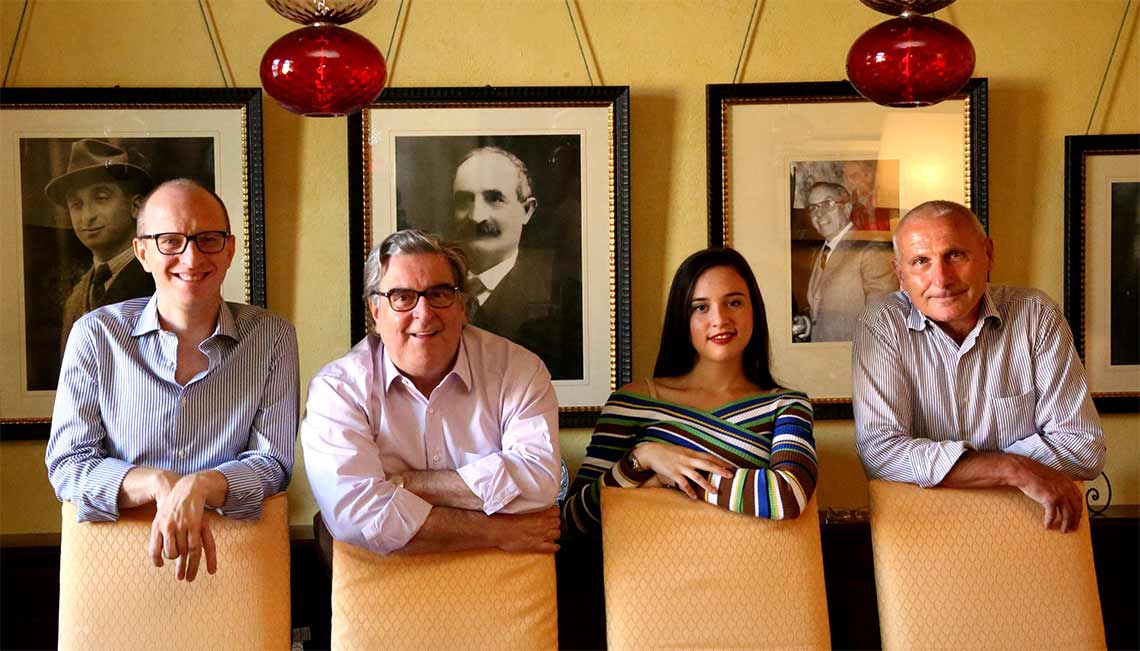
Pio Cesare Family, Piedmont, Italy
With the holiday season in
full swing, the anticipation of bringing out special
wines increases the closer to Christmas Eve,
Christmas and New Year’s it gets. That does not mean
the wines have to be overly expensive to be
exciting—and the sparkling wine need not be
Champagne—for simply moving away from the everyday
towards the new and special is part of the joy of
the season. Here are some red wines that fill that
prospect.
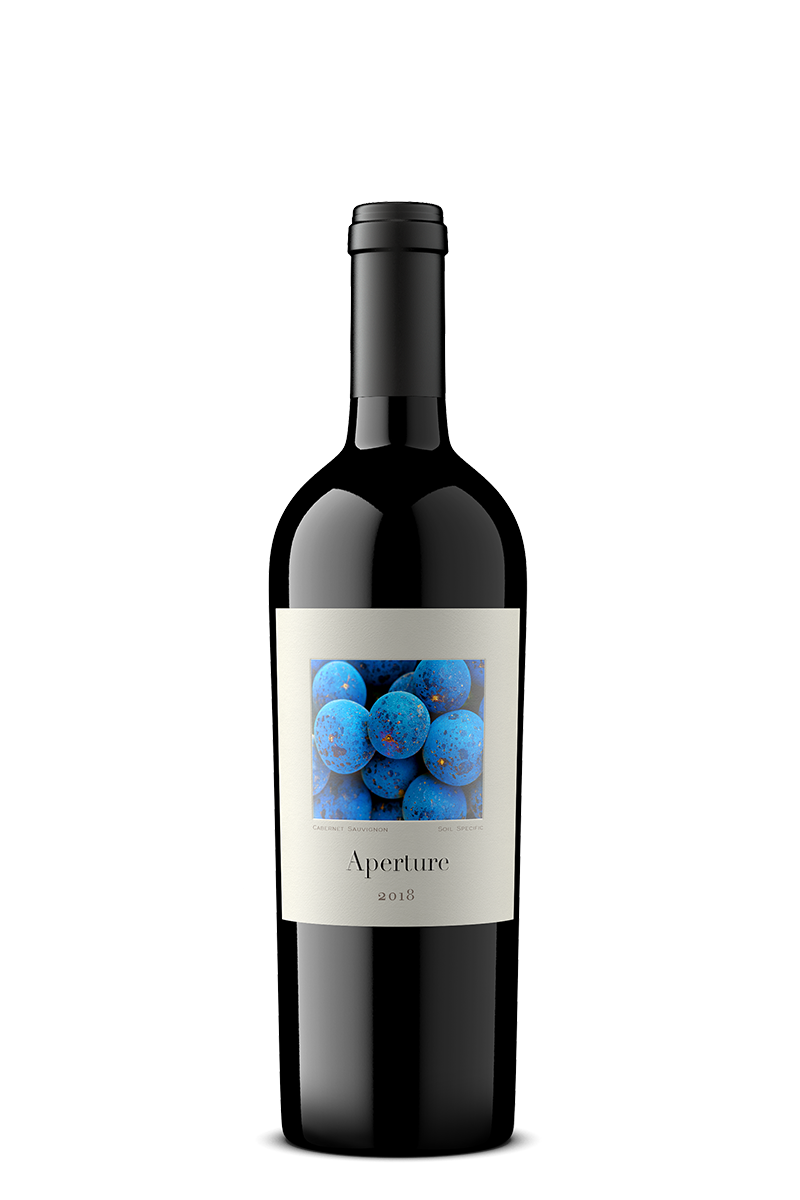
Aperture Cellars
Cabernet Sauvignon 2018 ($70)—Winemaker Jesse
Katz has always been a leader of the Bordeaux blend
style of Alexander Valley in Sonoma, as shown in
this vintage composed of 86% Cabernet Sauvignon, 7%
Malbec, 5% Merlot and 2% Petit Verdot, aged for 18
months in 50% new oak. It is unfined and unfiltered,
which gives it a robust character and lush fruit
with some pleasing tannins and underneath.
Sullivan
Rutherford Coeur de Vigne 2018 ($105)—This blend of 61%
Cabernet Sauvignon, 26% Merlot and 13% Petit
Verdot is a big Napa Valley red with a sure
density that winemaker Jeff Cole (since 2013)
prefers and has developed. Coeur de
Vigne (not to be confused with Bordeaux’s Château Lanbersac
Coeur de Vigne) means "heart of the
vine," referring to the historic Sullivan estate
in the heart of the Napa Valley, where the region
was once split into two parcels, Rancho Caymus to
the south and Rancho Carne Humana to the north.
The wine needs some time to mature, so maybe
Christmas 2025 would be a good time to pop the
cork.
Pio Cesare Barolo
Pio 2017 ($85)—This year is Pio
Cesare’s 140th anniversary, and the estate, in its
fifth generation, is still firmly set within the
grand traditions of Piedmont’s noble Barolo. The
grapes are sourced from family-owned vineyards in
Serralunga d’Alba (Ornato), Grinzane Cavour
(Gustava), La Morra (Roncaglie), Barolo Novello
(Ravera) and Monforte d’Alba (Mosconi). One whiff
and sip and you will know what a classic Barolo is
supposed to taste like, with elegance and balance.
The vintage can go on for years but the tannins have
softened and it’s a pleasure to drink right
now.
Inama Carmenère Più
Veneto Rosso 2018 ($21)—A good buy for an
IGT wine from the Veneto, made with the increasingly
popular Carmenère grape, with 30% Merlot to round it
out. It is aged for 12 months in French oak
barriques and 6-8 months in stainless steel tanks.
For a big dinner party of people who know good wine,
you could readily have three or four bottles of this
unusual bottling at the table.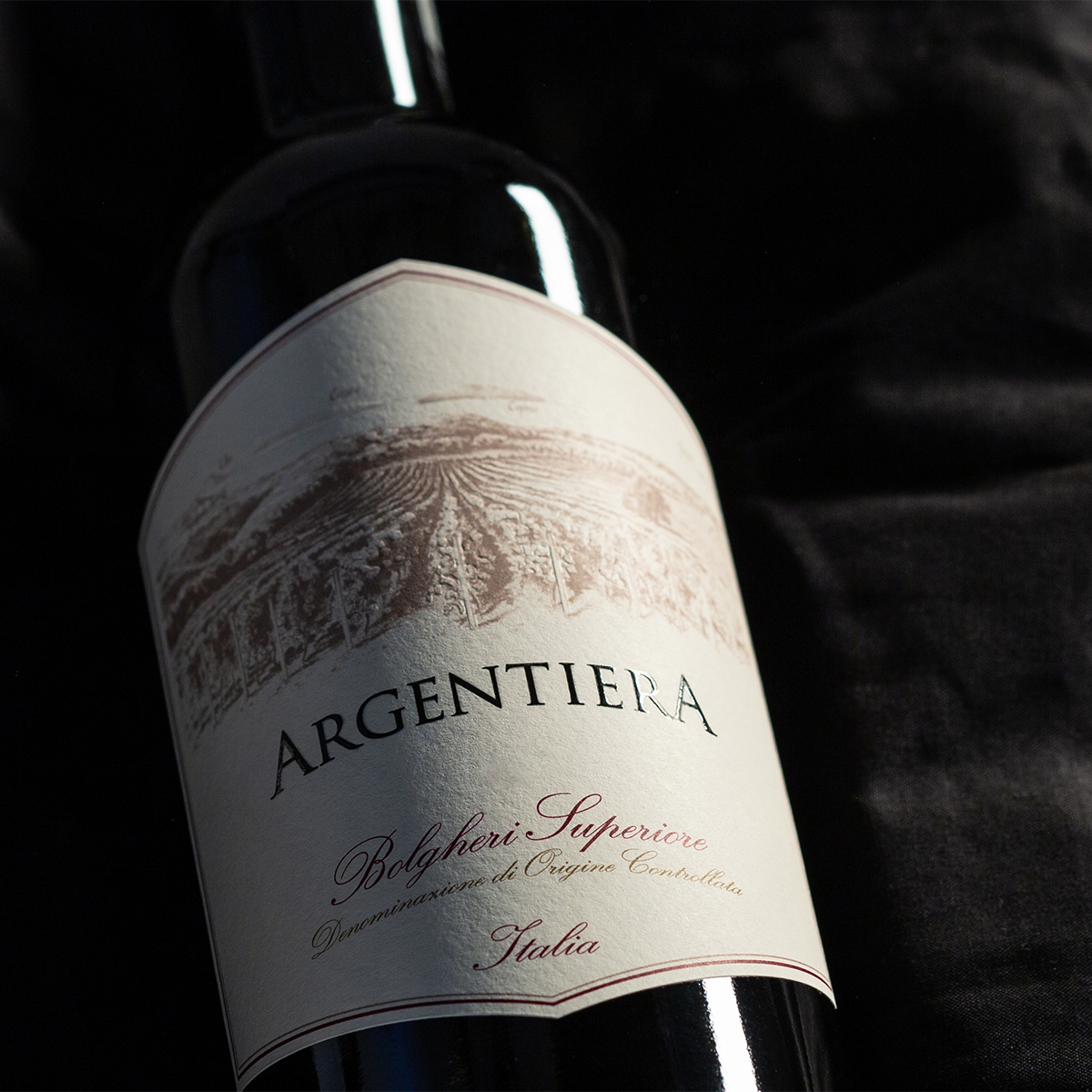
Tenuta Argentiera Bolgheri Superiore 2018 ($119)—Bolgheri has become
one of the most prestigious areas of Tuscany
(Sassicaia and Ornellaia are also made there), and
Argentiera makes one of the finest, from 50%
Cabernet Sauvignon, 40% Merlot and 10% Cabernet
Franc matured in French oak. Wisely, Argentiera
eschews the outdated and never official “Super
Tuscan” label, instead distinguishing itself by its
planting of a “jigsaw” puzzle of parcels that take
full advantage of sun exposure on different slopes.
The result is a very elegant wine, softer than
similar blends in Bordeaux and very Italian in its
refinement.
Lassègue
Saint-Émilion Grand Cru 2018
($60)—This is a straightforward Saint-Émilion
(Lassègue always is) with all of the richness that
you expect from a grand cru, made by Pierre Seillan and his
son, Nicolas. It is a
blend of 62%
Merlot, with 35% Cabernet Franc and 3% Cabernet
Sauvignon for tannin, and its price is an added
value for a wine of this distinctive character,
which goes very well with roast goose or prime rib.
It can certainly age for two or more years.
Hartford Family
Winery Highwire Zinfandel 2019 ($60)—Zinfandel may have
its detractors among those who regard it as an old
workhorse grape, but when taken seriously, as does
Hartford, it is a full-blown expression of a long
history of California winemaking. The name Highwire
derives from the vineyard’s trellising systems by
which half of the parcel is head-trained and  half is trained on a high
wire trellis strung between each vine, permitting
greater sun exposure and promoting even ripening.
half is trained on a high
wire trellis strung between each vine, permitting
greater sun exposure and promoting even ripening. ![]() It’s a blockbuster at 16.1%
alcohol, so you have to want to drink a wine of that
density, with all its characteristic licorice
spices, so it makes a capital choice for sweet
flavors often found in holiday food.
It’s a blockbuster at 16.1%
alcohol, so you have to want to drink a wine of that
density, with all its characteristic licorice
spices, so it makes a capital choice for sweet
flavors often found in holiday food.
Graham’s Six Grapes
Reserve Porto ($20)—Unless you’re the
host, or planning to stay over after the party,
spirits like Cognac and whiskey can be a bit too
soporific. But Port has long been a classic
in-front-of-the-fireplace drink, and it goes
exceptionally well with all cheeses and roasted
chestnuts. “Six Grapes” referred in the 19th century
to barrels Graham thought were vintage potential but
did not become so, but came real close. By spending
a shorter time in barrel, it has a fresh, fruited
aroma and flavor and toned-down sweetness everyone
can enjoy. You certainly can’t beat the price.
❖❖❖

DEPT. OF WHO THE HECK KNEW?
AND WHO THE HELL CARES?
"Turns Out a Lot of People Have Mixed-Up Feelings
About Their KitchenAid Mixers"
By Eve
Ettinger, NY Magazine 11/1
"When a kitchen appliance is
given to a new bride, it often carries the weight of
gendered assumptions, a suggestion of a certain kind
of role. Does the giver hope it will make the bride
more domestic, as my friend Amy’s ex-mother-in-law
did? (When my tweet went viral, Amy texted me about
how she left the mixer to her ex in the divorce,
rejecting the implied caregiver role and throwing
off that version of herself along with all those
paddle attachments.) So, too, the gift of a
KitchenAid mixer (a robust object that with a little
care will last you the rest of your life, as in
theory your marriage ought to) carries with it a
load of historical assumptions about housework and
gender roles and who makes sure that the household
runs smoothly. Appliances make it so easy! You can
have it all — the job, the partner, the kids, the
happy home — if you have the right tools. Or perhaps
the bride puts it on the registry in hopes that
having a shiny, high-powered tool in the kitchen
will entice her groom into joining her in domestic
labor. This 22-pound symbol of kitchen competence is
literally and figuratively heavy."
Any of John Mariani's books below may be ordered from amazon.com.
 The Hound in Heaven
(21st Century Lion Books) is a novella, and
for anyone who loves dogs, Christmas, romance,
inspiration, even the supernatural, I hope you'll find
this to be a treasured favorite. The story
concerns how, after a New England teacher, his wife and
their two daughters adopt a stray puppy found in their
barn in northern Maine, their lives seem full of promise.
But when tragedy strikes, their wonderful dog Lazarus and
the spirit of Christmas are the only things that may bring
his master back from the edge of despair.
The Hound in Heaven
(21st Century Lion Books) is a novella, and
for anyone who loves dogs, Christmas, romance,
inspiration, even the supernatural, I hope you'll find
this to be a treasured favorite. The story
concerns how, after a New England teacher, his wife and
their two daughters adopt a stray puppy found in their
barn in northern Maine, their lives seem full of promise.
But when tragedy strikes, their wonderful dog Lazarus and
the spirit of Christmas are the only things that may bring
his master back from the edge of despair. WATCH THE VIDEO!
“What a huge surprise turn this story took! I was completely stunned! I truly enjoyed this book and its message.” – Actress Ali MacGraw
“He had me at Page One. The amount of heart, human insight, soul searching, and deft literary strength that John Mariani pours into this airtight novella is vertigo-inducing. Perhaps ‘wow’ would be the best comment.” – James Dalessandro, author of Bohemian Heart and 1906.
“John Mariani’s Hound in Heaven starts with a well-painted portrayal of an American family, along with the requisite dog. A surprise event flips the action of the novel and captures us for a voyage leading to a hopeful and heart-warming message. A page turning, one sitting read, it’s the perfect antidote for the winter and promotion of holiday celebration.” – Ann Pearlman, author of The Christmas Cookie Club and A Gift for my Sister.
“John Mariani’s concise, achingly beautiful novella pulls a literary rabbit out of a hat – a mash-up of the cosmic and the intimate, the tragic and the heart-warming – a Christmas tale for all ages, and all faiths. Read it to your children, read it to yourself… but read it. Early and often. Highly recommended.” – Jay Bonansinga, New York Times bestselling author of Pinkerton’s War, The Sinking of The Eastland, and The Walking Dead: The Road To Woodbury.
“Amazing things happen when you open your heart to an animal. The Hound in Heaven delivers a powerful story of healing that is forged in the spiritual relationship between a man and his best friend. The book brings a message of hope that can enrich our images of family, love, and loss.” – Dr. Barbara Royal, author of The Royal Treatment.
 |
The Encyclopedia of American Food and Drink by John F. Mariani (Bloomsbury USA, $35) Modesty forbids me to praise my own new book, but let me proudly say that it is an extensive revision of the 4th edition that appeared more than a decade ago, before locavores, molecular cuisine, modernist cuisine, the Food Network and so much more, now included. Word origins have been completely updated, as have per capita consumption and production stats. Most important, for the first time since publication in the 1980s, the book includes more than 100 biographies of Americans who have changed the way we cook, eat and drink -- from Fannie Farmer and Julia Child to Robert Mondavi and Thomas Keller. "This book is amazing! It has entries for everything from `abalone' to `zwieback,' plus more than 500 recipes for classic American dishes and drinks."--Devra First, The Boston Globe. "Much needed in any kitchen library."--Bon Appetit. |
"Eating Italian will never be the same after reading John Mariani's entertaining and savory gastronomical history of the cuisine of Italy and how it won over appetites worldwide. . . . This book is such a tasteful narrative that it will literally make you hungry for Italian food and arouse your appetite for gastronomical history."--Don Oldenburg, USA Today. "Italian
restaurants--some good, some glitzy--far
outnumber their French rivals. Many of
these establishments are zestfully described
in How Italian Food Conquered the World, an
entertaining and fact-filled chronicle by
food-and-wine correspondent John F.
Mariani."--Aram Bakshian Jr., Wall Street
Journal.
"Equal parts
history, sociology, gastronomy, and just
plain fun, How Italian Food Conquered the
World tells the captivating and delicious
story of the (let's face it) everybody's
favorite cuisine with clarity, verve and
more than one surprise."--Colman Andrews,
editorial director of The Daily
Meal.com. "A fantastic and fascinating
read, covering everything from the influence
of Venice's spice trade to the impact of
Italian immigrants in America and the
evolution of alta cucina. This book will
serve as a terrific resource to anyone
interested in the real story of Italian
food."--Mary Ann Esposito, host of PBS-TV's
Ciao
Italia. "John Mariani has written the
definitive history of how Italians won their
way into our hearts, minds, and
stomachs. It's a story of pleasure over
pomp and taste over technique."--Danny Meyer,
owner of NYC restaurants Union Square
Cafe, The Modern, and Maialino.
|
 |
 |
 |
 |
 |
 |
 Everett Potter's Travel Report:
Everett Potter's Travel Report: 
 Eating Las
Vegas JOHN CURTAS has been covering
the Las Vegas food and restaurant scene
since 1995. He is the co-author of EATING LAS
VEGAS – The 50 Essential Restaurants (as
well as the author of the Eating Las
Vegas web site: www.eatinglasvegas.
He can also be seen every Friday morning as
the “resident foodie” for Wake Up With the
Wagners on KSNV TV (NBC) Channel 3 in
Las Vegas.
Eating Las
Vegas JOHN CURTAS has been covering
the Las Vegas food and restaurant scene
since 1995. He is the co-author of EATING LAS
VEGAS – The 50 Essential Restaurants (as
well as the author of the Eating Las
Vegas web site: www.eatinglasvegas.
He can also be seen every Friday morning as
the “resident foodie” for Wake Up With the
Wagners on KSNV TV (NBC) Channel 3 in
Las Vegas.
MARIANI'S VIRTUAL GOURMET
NEWSLETTER is published weekly. Publisher: John Mariani. Editor: Walter Bagley. Contributing Writers: Christopher
Mariani, Misha Mariani, John A. Curtas, Gerry Dawes, Geoff Kalish.
Contributing
Photographer: Galina Dargery. Technical
Advisor: Gerry
McLoughlin.
If you wish to subscribe to this
newsletter, please click here: http://www.johnmariani.com/subscribe/index.html
© copyright John Mariani 2021
